#same with the entirety of the proximity dialogue
Text
i would pay so much money for the chance to play night in the woods for the first time again
#nothing will ever hit me as hard as the ‘i want it to hurt. because that means it meant something’#same with the entirety of the proximity dialogue#it’s such a human game which is ironic considering the nature of the game but listen to me#the way it goes through so much in such a short span of a game amazes me each time#the concept of ‘and they were all just.. shapes’ makes me foam at the mouth#mae borowski i relate to you so hard#nitw
443 notes
·
View notes
Text
“I finished “Heat 2” the other night and then couldn’t sleep a wink afterward. Perhaps this has happened to you, where you’ve read an intense book or watched an intense film or TV show and your mind wouldn’t let it go. Didn’t want to let it go. Had to stay IN the story, even when you were pleading with your mind to not do that. I sailed through the final chapters of this novel and absorbed, through sheer proximity to its driven characters, a surge of my own. An inner voltage. Rest was impossible. I wanted to get up. Rob a bank. Rob all of the banks. Rob a mint. A treasury. Invade entire countries and then deftly help myself to the entirety of their riches. I wanted to do a lot of crime, and I still do.
I also wanted to become a different writer entirely.
(…)
So it was only natural that Mann, no stranger to rehashing his own material, would want to dive back into this particular world. Where this turns audacious is with Mann deciding to make his sequel to “Heat” not as a movie, but as a novel. His FIRST f—king novel, no less. He may have had bestselling author Meg Gardiner as his co-author for this book (I will now commence reading all of Gardiner’s work), but it still takes a lot of balls to make a sequel to a movie you made 27 years ago, do it in an entirely different form, and give it the straight-up title “Heat 2,” as if this is the most natural franchising move one could make. You’re flirting with fan fiction when you attempt this kind of stunt.
And indeed, the opening of “Heat 2” almost had me concerned that this stunt would leave Mann a wet spot on the bottom of a canyon floor. The prologue is a somewhat clumsy synopsis of the 1995 film. The prose is in present tense and reads very much like the stage directions in a screenplay. It’s clear Mann is doing this for the first time (“I have no idea how to write a novel, OK?” he told the New York Times).
(…)
If that sounds complicated to you, it doesn’t read that way on the page. This is because Mann breaks a lot of cardinal rules in “Heat 2” — “show don’t tell” being perhaps the biggest one of all — to give you a crystal clear idea of who these men are and how they’re maneuvering against one another. At first, this comes off as simplistic. But once you get into the rhythm of the language, those concerns fade away and the prose feels necessary. Active. In fact, nothing in “Heat 2” feels superfluous. In terms of story, it’s the rare sequel where both the original and the follow-up enrich one another. Consume both together and you know it’s the product of the same auteur. The same vision.
(…)
Most of all, you see the work. Mann, like our best artists, is so dedicated to authenticity that he does the research of a Pulitzer-winning journalist (as did Gardiner) to nail the exact details of the story: which guns the characters use and how they use them, which cars they drive and why, which stash houses they use and what those places look, sound and smell like. That work is on the page. The dialogue and details all feel real because they are real. Everything that feels fake or needless, including the word “and,” is left on the cutting room floor. What you’re left with is pure, 100% uncut story.
(…)
I have read a small number of novels in my life that left me saying “I need to write like this.” It’s a predictable list of titles for a prep school kid: “Catch-22,” “Confederacy of Dunces,” “Ulysses,” “World War Z,” etc. But “Heat 2,” more than any of those, showed me what it takes to write a story that’s unlike any other. You focus. Observe. Concentrate. Absorb. Then, only when you know as much as your characters know, are you ready to rock and roll. That is where the nuts and bolts of inspiration are to be found. Slap a WWMMD bracelet on my wrist, because “Heat 2” shows you how this is done. It’s not easy work, but the payoff is enormous.”
“Like Heat, the novel’s narrative unfolds in the labyrinthine spaces of post-industrial global capitalism: in the cracks and detritus of modernity, in the non-places.
This is a world where high-tech consumer products sit alongside covert military weapons in the marketplace. Where shopping malls proliferate like airports, with private armies – and where the internet is just one part of a logistical infrastructure forever greasing the wheels of capitalism.
Legal or illegal, it makes no difference, the novel suggests. Only the players change. They seek investment and profit wherever it comes, supported by security and communications systems and informational flows. Mann and Gardiner are clearly awed by the ethereal, electric brutality of this thing, this hyper-object called “free trade.”
(…)
The most important medium-specific aspect of any narrative is, of course, its style. Style is the thing that converts the presentation of information into art – the expressive dimension of a work foundational to its aesthetic qualities.
There have been some exceptionally written, stylistically idiosyncratic popular novels that have been perfectly translated into film. Thomas Harris’s Red Dragon is a great example, made by Mann as Manhunter in 1986. The pop, neon-lit prose of Harris is adapted effortlessly into Mann’s high modernist aesthetic, so that reading the novel and watching the film become strangely similar experiences.
An equivalent thing is at play in Heat 2. Mann/Gardiner’s style perfectly translates the style of Heat into a radically different medium. This is no small feat.
We read prose that interweaves vivid and precise description with expressionistic, existentially charged passages. We are awed, as in the film, by the starkly drawn genre characters, by the melancholic, romantic images of solitary figures battling for survival in a sparkling but meaningless universe of complex and overlapping forces.
(…)
Mann has always been an auteur interested in what it means to be American. He studied in London, and has approached the question throughout his career with an internationalist sensitivity across multiple films and genres – from his kinetic adaptation of the The Last of the Mohicans (by the godfather of American action novels, James Fenimore Cooper), to the biopic of American boxing icon Muhammad Ali.
This continues in Heat 2, with the literary medium giving him more opportunity to explicitly think about and theorise this Americaness.
(…)
Is this as good a novel as Heat is a film? Probably not. Heat routinely features in top 50 critic lists and enjoys enduring popularity. Heat 2 is excellent, written in lightning prose with flashes of brilliance, but it probably wouldn’t make anyone’s top 50 list of novels.
That said, its near seamless continuation of the story world of its antecedent makes reading it an incredibly pleasurable experience. And many of the touches that define Mann as an auteur – a hyper-real sense of place, an interest in the brutality and efficiency of global capitalism, a sense of character through surface details – are present in Heat 2.”
“Over the course of his long career, Mann has amassed untold amounts of research into various niche topics, from serial-killer psychology to cybercrime to 18th-century hunting techniques. The world of Heat offers him a big enough canvas to contain nearly all of those obsessions, and part of the fun of Heat 2 lies in watching its authors pull ideas and tiny details from across Mann’s entire filmography. A Thief-esque vault heist early in the book foregrounds the kind of process-oriented details that Mann fans rejoice over, such as which specific drill bit cuts best through poured concrete and how to bypass the relocking mechanism on a safety-deposit box. In the post-Heat timeline, a subplot involving malware recalls Blackhat, while a segment in Ciudad del Este, a free-trade zone in Paraguay, allows Mann to utilize a setting that was originally intended for the ending of Miami Vice (2006).”
“Each new Mann project shares a similar quality: it’s almost always simultaneously aesthetically of its time, but also way ahead of things. The whole idea for Miami Vice, for instance, can be summed up as “cop show plus MTV”: a formula tailor-made for its release in the ‘80s, but that, seen from today’s vantage point, seems the epitome of retro. There’s always this long strange gap, between when a Mann movie feels perfect and when it feels perfect again: being very closely tied to a specific time means you run the risk of feeling dated when that time has passed. I recall rewatching Miami Vice 20 years after it came out and thinking it looked so 1980; Heat similarly felt extremely ‘90s a decade after its release. And, somewhat tellingly, Mann’s 2006 film version of Miami Vice, starring Colin Farrell and Jamie Foxx, was a box office success—but the critics weren’t as into it. One wrote, “Unlike the TV series, Miami Vice takes itself too seriously to be trashy—and too seriously to be much fun either,” while another felt, “It can look cool. But more often, as we wait for the lightning that never arrives, it frustrates.” At the time, people felt the movie was too post-9/11 gloomy and somber.
But the thing about Mann’s work is that, while it initially ages horribly, over the long run it matures into something spectacular. A decade and a half later years later, critics are writing about how Miami Vice went from “Misfire to Masterpiece,” quite possibly the only “cult favorite” I can think of that also happened to debut at number one and make $164 million at the box office. He has always had an eye (and an ear; the soundtracks are always top-notch) for details, the things that make scenes pop. All the blue light bouncing off of white marble or glass in Heat, the blinking lights of 1980s Chicago shining off of James Caan as he leans up against a beam in Thief, Don Johnson and Phillip Michael Thomas pulling up a Ferrari Daytona Spyder 365 GTS/4 to a phone booth under a neon sign as Phil Collins sings “In the Air Tonight.” These were all very specific choices and have left a lasting impact for a reason.
Heat 2 doesn’t have to contend with that. A film version might, but as a book that’s out in 2022 and set in both the late-1980s and mid-1990s, it’s basically Michael Mann historical fiction. That’s not something I ever thought I’d type, but given the opportunity, I wish there was even more of it now. It gave me a better understanding into how the creator of Heat saw an even bigger world, but also made me appreciate a guy whose work I’ve literally grown up on. That sort of thing doesn’t happen very often.
There are plenty of other directors who have great vision, who understand the style of a moment and how a certain song can truly capture the mood. But Mann’s whole thing is a trust in his own vision and an absolute belief that little details are a must. The guy seems to operate on a creative level not dissimilar from the one inhabited by some of the great fashion designers, who know that new seasons require new trends, but that good taste is timeless. Being able to turn that into a great story, whether Heat on the big screen or Heat 2 in a book, is a trick few besides Mann can pull off. There’s sex, violence, cool cars, bright lights, and a whole lot of grit. It all works together. When a character is at the Beverly Hilton—where “everything gleams,” including the “Lamborghini and the Bugatti parked outside the entrance, placed like ornaments,"—I kept thinking, Man, I can see that…in a Michael Mann movie. I want to see that in a Michael Mann movie. And if that doesn’t happen, then I’m happy I read it in a Michael Mann novel.”
4 notes
·
View notes
Text
Summer Troupe with an S/O who Shares the Same Hobby
A/N: For Kumon's, I say baseball but please know I mean baseball AND softball, I just didn't want to keep writing 'baseball/softball'. Hope that's okay! Hope y'all like it!
CW(s): none
❂ Tenma Sumeragi - Acting
Tenma thinks it’s really interesting that the two of you are into acting
He’ll definitely ask to practice scenes with you, although he seems to always get flustered when practicing romantic ones -so he just avoids eye contact because the moment he looks at you he dies inside-
If you do film acting, he’ll make sure to watch every movie you’re in no matter if you’re a lead or an extra. If you do theatre acting, he’ll try to attend as many of your performances as he can. If you just like acting but don’t really participate in anything, he’ll still support you and love practicing with you
If you need to practice for an audition, he’d love to help you out. No matter if it’s critiquing a performance or helping you practice dialogue, he’ll do anything to help you be successful
“Hey Tenma, can you help me?”
“Yeah, sure, what do you need help with?”
“I have an audition coming up and I need to work on this dialogue with someone.”
“Sure, I’ll gladly help.” You went over to sit next to Tenma and shared a script between the two of you. You couldn’t help but notice how his ears turned red from the proximity. The two of you went back and forth reading the dialogue, Tenma giving pointers at times on which emotion you should convey when, when to pause, and how to effectively give the best performance you could give. Even if he could be a bit redundant at times with his pointers, he did it out of love for you and hope for your success as he knows how amazing you are, and he wants everyone else to be able to know too.
If he ever has the opportunity to act with you, he’ll take it in a heartbeat. He’d absolutely love to work with you no matter what type of acting it is
Tenma is one of your main supporters in your acting career, and you can bet that he will stay by your side through all of it
❂ Yuki Rurikawa - Fashion and Sewing
Yuki loves that you’re good at fashion; I mean, he never has to worry about whether or not you look fashionable so he knows you two are always the cutest people in the room
If you ever make him clothing in his style he’ll feel incredibly honored that you took the time to make something for him that he’d actually wear
If either of you are struggling to pick an outfit for the day, the other will help and throw out ideas
Yuki was amazing at fashion. He knew it, you knew it, and most people knew it. No matter the type of fashion, he could easily put together a concise outfit in every style that would accentuate everyone’s so-called good side. So on days like today when you had no clue what to wear, Yuki was the person you went to. You hit the video call button next to his contact and waited for him to answer.
“Hey, what’s up?” Yuki answered the phone.
“Hey, Yuki! I’m not too sure what to wear today so I was wondering if you could help.”
“Sure, I’d love to. What are you thinking so far?” You set down your phone as he spoke and held up the outfits you were thinking about.
“Right top with left bottoms would look good. They’d look really good with that one pair of shoes you own too…”
If you enjoy sewing and are good at it, you can bet that Yuki is making you help him with costumes.
If you help with sewing the costumes, you’ll most likely befriend Taichi as well and the three of you may become quite close due to the amount of time you spend together
❂ Muku Sakisaka - (Shoujo) Manga
Muku is ecstatic that you also love manga, specifically shoujo
He’ll invite you to the shoujo manga club meetings he has with Sakyo and Kazunari so all of you can talk about that meetings manga
If you actually attended, he’d be so beyond himself with excitement that he’d be basically vibrating the whole time (Kazunari thinks it’s sweet how happy you make Muku)
He’ll give you so many recommendations that he won’t expect you to read them all, but if you do he’ll be so happy
He’d love it if you gave him recommendations too! Muku would be sure to read your favorite mangas so he can talk with you about them
“Hey Muku! Look at this new manga I found! I think you’d enjoy it!” you said, walking into his room.
“Oh, hey! What’s the manga called?” he perked up at the sound of your voice and began making his way over to you.
“It’s this manga called Wotakoi: Love is Hard for an Otaku?”
“Oh, I've heard of it!”
“Really? Would you like to read it? I have the whole set if you’d like to borrow it.”
“I’d love to! Oh my gosh, I’m so excited to read this!”
“I’ll bring it over tomorrow then if that’s alright.
He just feels so accepted with you since you have the same interest in manga and he feels like he can be his full authentic self with you, just as he can be with his troupe
❂ Misumi Ikaruga - Triangles
Misumi is ecstatic to find someone with the same passion for triangles as him
He definitely calls you his triangle, and it makes him happy beyond belief you understand how much that means to him personally as you also love triangles
If you call him your triangle, he will positively melt on the spot and cover you in small kisses
Triangle hunting dates! The two of you will most definitely go out together to search for the shape
Be ready to be gifted so many triangle things- you can hardly believe how many items he finds especially to gift you but that’s Misumi for you
“I brought you a gift!” Misumi said one day as he walked into your room.
“Really?” you said, excited.
“Mhm! Close your eyes and put your hands out.” You complied with Misumi’s orders as you buzzed with anticipation. You felt a light object be placed into your hands as you heard Misumi shuffle closer to you. “You can open your eyes now.” When you did, you spotted a triangle shaped charm with a heart on the inside in your palms. You reflexively clenched your hands and held the charm to your heart. “Do you like it?” he asked. You could almost hear a hint of nervousness in his voice.
“Misumi, I love it.” a smile broke out onto his face as he heard you say that.
“Really!? That makes me so happy!” he said as he pulled you into a hug.
The rest of the company find it so odd that Misumi is dating someone with the same love of triangles as him, but at the very least the find it cute and mildly entertaining
❂ Kazunari Miyoshi - Painting
Kazunari thinks it’s so cool that you like painting as much as him!
Get ready for painting dates where the two of you just talk about everything and nothing while working on your own projects
Do you know that old social media trend where people would paint on their significant other’s back? Yeah, he’d definitely love for the two of you to do that and take a picture so he can post it on Instablam
If he’s ever stuck on a project, he’ll ask you for help
You walked into Kazunari’s room and saw his head on his desk. Before you approached your boyfriend you waved to Muku who gladly said hello.
“He’s struggling.” Muku said as he climbed down his ladder and left the room. You just nodded in acknowledgement, grabbed a chair, and went to sit next to Kazunari. “I need help.” he whined, placing his head on your shoulder in an attempt to get your attention.
You placed a kiss on his cheek and then spoke, “what is it?”
“I can’t think of an idea for the next play’s poster.
“Okay, what’s the play about?” He explained the entirety of the plot in one fell swoop, and in the back of your mind you couldn’t help but applaud Tsuzuru at his creativity.
“Okay, so I was thinking…”
If you’re ever stuck on a project, he will also always help!
If you ever need any critique he’d love to go over your works with you, and he’d also love to receive constructive criticism when he asks for it
He just loves dating someone with the same passion for art he does since you can understand where he’s coming from a bit better when it comes to talking about it
❂ Kumon Hyodo - Baseball
Although Kumon doesn’t play baseball anymore, he still loves the fact you enjoy the sport as much as he does
If you play, he’ll definitely practice with you and attend any games he can. He’s definitely one of the loudest on the sidelines but he can’t help it! He’s so proud of you
Kumon cheered as you went up to bat. He wanted to make sure you could hear that he was there watching and supporting you. He mentally wished you good luck, but in his heart he knew you didn’t need it as the two of you had been practicing very hard. He watched as you went up to bat and he sat with baited breath and he watched as you did amazingly.
After the game he went to greet you and immediately pulled you into a hug.
“Kumon, I’m sweaty!” you protested, but the entire time you were laughing and didn’t make any move to push him away.
If you don’t play but only watch baseball, he’s still excited to have someone to talk baseball about to someone/watch baseball with
He’ll definitely invite you to any professional baseball games he gets tickets for
He absolutely loves enjoying his favorite sport with you and he hopes that you do as well
· · ─────── · ☆ · ─────── · ·
Masterlists || FaQ || Requesting Rules/Remarks
#.fandom: A3!#.content: fluff#.media: headcanons/scenarios#.characters: Tenma Sumeragi#.characters: Yuki Rurikawa#.characters: Muku Sakisaka#.characters: Misumi Ikaruga#.characters: Kazunari Miyoshi#.characters: Kumon Hyodo#a3 x reader#tenma sumeragi x reader#yuki rurikawa x reader#muku sakisaka x reader#hisoka mikage x reader#kazunari miyoshi x reader#kumon hyodo x reader
123 notes
·
View notes
Text
Countermeasures || 1
Archives
Fives x ofc!reader
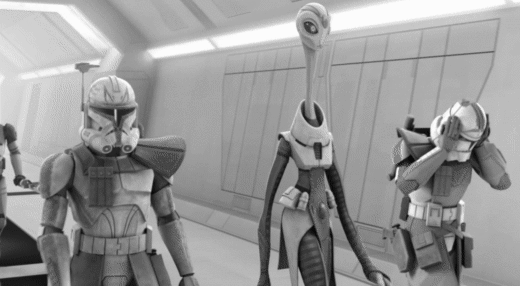
x | next chapter ->
| main masterlist | series masterlist | read on ao3 |
Rating: 18+
Word Count: 3.6k
Warnings: mentions of lust? is that a warning? otherwise, nothing yet ;)
chapter summary: Renna (you), an intern who spent the entirety of her internship thus far filing paperwork in the archives of Tipoca City’s medical wing, finally is able to work with a real patient - that patient just so happens to be Fives.
note: Renna will basically be taking the place of AZI-3 in the Conspiracy arc. A lot of the dialogue I wrote is from the episode, and of course I added more to dig deeper into Renna and Fives as characters. When this idea came in my head I was only planning on writing it as a oneshot. As I starting writing this, however, I realized there was so much more that could be done with it since this arc is both a good one and a sad one. If you’re ready to go on this journey with me, then keep going under the cut! <3 Also, I wanted to add that there will be POV changes in this chapter. I don’t know if I’ll stick with that going forward, but we’ll see.
* tbh special thanks to @bvcketfvcker for coming up with the series title and being da Best™
***
The archives of the medical wing in Tipoca City, the capital of the watery planet Kamino, were always so cold and lonely. Every single day of your internship thus far has included you being nearly drowned in paperwork, no real field experience to show for it.
You’ve been on Kamino for your medical internship for what, close to six months now? You were still stuck doing paperwork. Maybe at the six month mark you’d be moved up to sterilizing all the medical equipment, which would seem terrible to anyone else, but at least you’d be in proximity to anything remotely “medical”. You were longing to get your hands dirty, to start real field experience, to learn how to heal. You wanted to help people, to help anyone in need. You wanted to learn the practices for saving someone’s life. Everything you wanted, you could not get if you were stuck in the archives with paperwork as your only companion.
You decided within your first month that you would not let the paperwork and lack of real purpose get to you. So, you made your situation better by wearing - to the best of your ability - a positive attitude. On the day that marked the end of your first month here, the Kaminoans told you that music can be played in the archives as long as it’s not too loud, so you brought in a small radio the very next day. The start of your second month was a little better than the day before. You hummed to the music playing on the radio as you tried to make a game out of filing the paperwork. Turns out, not even a simple game could be made out of something so boring and tedious as filing paperwork.
You lost count of the days you’ve been in Tipoca City, within the archives shelled by the stilted dome structures, after your second month. Every day was exactly the same; you filed and shredded paperwork, organized reports, and finished filling out medical reports that the Kaminoan doctors didn't even want to bother with. Every day you woke up early, headed to the archives, and spent your entire day there in solitude until it was time to head back to your quarters for the night. Lunch was always dropped off to you by a couple of guards from the Kamino Security Team. The guards were always in full grey and white armor but you already knew what they looked like; they were clones, and you’ve seen their face in every file. They were handsome, sure, but there were literally hundreds of thousands of them out there.
You were pretty sure you were coming up on month six of your monotonous internship. Waking up and getting ready was a routine ingrained in your bones. You were taking the regular route to the archives from your quarters when you were stopped by a couple Kaminoan doctors on the way. To your surprise, they asked you to follow them, which you were hoping translated to you not having to work in the archives anymore. Maybe month six was the lucky number.
You walked behind the tall and slender creatures through unfamiliar halls. You had no idea where you were following them to, but anywhere was better than where you were originally heading.
They kept walking, with you in tow, when you passed by the only Jedi you’ve ever really spoken to - Master Shaak Ti, a calm and collected Togruta who was known to have a soft spot for the clones here on Kamino. The Jedi nodded in greeting to the Kaminoans in front of you, then over at you. With no words spoken, you were now following the Jedi through the halls, still unsure of the destination.
Just around the corner, you saw two very decorated troopers coming towards you. They donned blue and white armor with a ton of other accessories. As they got closer, the one trooper removed his helmet and carried it at his side. This trooper had the usual dark brown hair and kept the common clone cut style. The way this clone walked with his helmet pressed to his hip had awoken something in you, though you couldn't put your finger on exactly what that something was.
“General Shaak Ti.” The other clone removed his helmet as he greeted the Jedi. He was blonde and sported a closely shaved cut; despite having the same face and body, the two clone troopers looked completely different. They were unlike any clones you’ve ever seen.
That’s when you noticed another trooper laying on a stretcher behind them; his hair was long enough to be worn in a bun, a tear drop was inked underneath one of his closed eyes. He was also unlike any clone you’ve ever seen - especially since he appeared to be unconscious, He was hooked up to oxygen, you also noticed, as two guards pushed his floating stretcher right by you and around the corner, out of sight once they went down the hall.
You realized how zoned out you were and quickly snapped back to reality - only for only a second, though - as you became transfixed on the clone in front of you on the right, the one with dark hair. You scanned his features a little more now that he was closer; he had a dark goatee that framed his chin and his right temple had the number “5″ inked on the skin. His armor was crazy different from the armor the guards here wore. He looked... good. Uh oh.
For just a brief moment, the “good looking” trooper’s eyes broke away from his conversation with the Jedi and met yours. Slightly embarrassed, you snapped your head forward and glued your eyes to the Kaminoan’s ankles in front of you.
Just as you started listening in on the conversation, the two clones, the Jedi General, and Dr. Nala Se broke away and turned the corner in the same direction they took the unconscious trooper.
Kriff. You missed the entire conversation. The Kaminoans started moving forward, and you assumed you were still supposed to follow them, so you did. You still had no clue where you were going, but you’ll get there eventually.
***
Fives’ POV
Fives walked to the left of Rex, a long-neck doctor in between them, while Tup’s unconscious body was guided by two Kamino guards behind them.
“You will have to say goodbye to your friend now.” The long-neck broke the silence. Fives was worried for his friend. No one, not even Kix, could figure out what was wrong with him. Why would Tup shoot and kill General Tiplar? Fives noticed Tup was acting somewhat strange right before it all happened, but didn’t think too much of it at the time, Now, he’s racking his brain, trying to understand what set Tup off. He’s a good soldier, a good man. He’d never do such a thing in his right mind.
It was suggested that Tup be sent to Tipoca City, to Kamino, back to his roots, for a better chance of figuring out what was wrong with him. Fives gladly accepted the offer to escort his friend there, and was overjoyed that Rex came along with them.
General Shaak Ti came into view, and the troopers came to a halt. Captain Rex greeted the General, and she turned her attention over to Fives.
“Fives, am I correct?” He nodded. Tup was being pushed from behind them and then around the corner in front of them, quickly going out of view. The General spoke again, her eyes glued on the unconscious trooper being led down the hall. “You’ve served with Tup?”
Fives was desperate to be by his friend’s side right now. “Yes.”
Then he saw you. You, a foreign species to Kamino. What were you doing here? It had been a while since Fives was last on Kamino, but he was sure there weren’t any others like you here before unless they were Jedi - but the only Jedi known to hang around Kamino was General Shaak Ti.
He had noticed you tailing the long-necks before you had even come entirely into view. Fives let his eyes flicker over to you as Tup was being taken away, only to have locked eyes with you for but a second. He noticed you blushed right before you snapped your head forward, obviously embarrassed that you’d been caught staring. General Shaak Ti’s voice broke Fives’ trance - didn’t even notice he was losing focus once he caught your eyes - and it was all over in less than five seconds.
“You must come with me.”
Fives quickly snapped his attention back to General Shaak Ti, “with... all due respect, General, I can’t just abandon him now.” The Jedi General smiled reassuringly, and turned to lead Fives and Rex down the hall in the same direction Tup was taken.
Fives knew where his undivided attention should be, and that was on Tup - his friend - his friend that for some reason just gunned down a Jedi in the heat of battle in the space station just outside of Ringo Vinda, only to come to with no memory of what he had done. Fives cursed himself for thinking of you when his friend was about to be strapped to an exam table, being poked and prodded like some kind of lab scurrier.
***
Renna’s POV
Dr. Nala Se, the Chief Medical Scientist on Kamino, approached you once you had gotten to the head medical lab and informed you that you’d be the one who would start procedures on a clone trooper who had potentially been exposed to a virus of some kind. You nodded, all too giddy as you gladly accepted the task.
You were escorted by two guards to where you’d be working with the patient. When the door whisked open, you slowly made your way into the quiet room, the door shutting quickly behind you. You glanced to the right, noticing the window that would normally allow you to see into the room next door was blacked out - put into the privacy setting. Strange.
“You?” The deep voice - a voice that sounded like honey in your ears - put a halt on your thoughts about the darkened window. You knew it was the voice of a clone; the only voices you ever heard were either the slow, drawn out words of the Kaminoans or the clones’. Of course a clone would be in that room, of course a clone would be the subject of your testing.
Who you didn’t expect to see was the clone trooper you saw in passing not even a half hour ago - the one with the dark goatee and number 5 tattooed on his temple - the one who made you blush when he caught you staring.
You felt yet another blush heat your cheeks before you even registered it was happening. What the hell were you blushing for? He’s a clone, and you’re here to take blood samples and body scans to make sure he’s okay. You knew you were staring at him like a fool, and for way too long. You shook your head slightly in an attempt to reorganize your thoughts.
“You ok, Miss... miss?” He stood up from his seating position on the cot, and cocked his head to the side with his arms folded across his chest. You nodded your head slowly.
“Renna,” you nearly whispered your name to him - the words almost came out choked - for some reason you had forgotten how to speak in Basic for a moment.
“Look, Miss Renna, I am not a threat. Neither is Tup.”
Your brow raised as you studied the clone’s expression. It was hard; his eyes were piercing and his brows were furrowed. Crossed arms flew to his sides, hands tightening into fists. No doubt he was feeling angry and confused.
“T- Tup?” Was that the name of CT-5385? “You’re referring to CT-5385?”
“Tup! The trooper in that room right there?” He pointed over to the darkened window, “He’s a good soldier, my friend, and he’s in the room next door getting - getting tortured by those long-necks.” A beat. “None of us clones go by numbers anymore, by the way.” You closed your eyes for just a moment, trying to think about what to say next. You inhaled deep through your nose, then slowly out through parted lips, watching as his expression went from angry to more... afraid? Worried?
“Trooper, I promise Tup is in good hands. I’ve been briefed on his- his condition... they - we - just want to find out what made him kill Jedi General Tiplar, that’s all. They’ve asked me to do a couple of procedures on you, take some notes, since you were close with Tup. Maybe we can find something in you that will help your friend.”
The trooper’s expression changed again, softening as his fists unclenched at his sides. Surely he had to understand the gravity of the situation; when you were briefed, it was mentioned that no one on Kamino had any idea why CT-53 - Tup - shot a Jedi General in cold blood, or why he keeps floating in and out of consciousness, murmuring things like “kill Jedi”. Clone trooper Tup seemed to have no memory of what he had done; and so far, no scans were showing anything wrong with him, though his health was deteriorating.
You walked over to the counter where the sterilized needles and scanners resided and started to prep the equipment, reading over notes to see what it is you needed and what you were supposed to be testing him for. Reading through the notes, you realized this trooper’s designation was ARC-5555, and the tattoo “5″ on his temple made sense now. It was actually kind of... cute.
It was silent for a couple minutes while you were getting everything ready when a loud, airy sigh coming from behind you made you turn around to face ARC-5555.
“The name’s Fives.”
***
Fives’ POV
Fives was getting more worried for Tup by the minute. His rising frustration didn’t help, either. General Shaak Ti had engaged the privacy setting on Fives’ only view of his unconscious friend, leaving him in the dark as to what the long-necks were doing to Tup in the room next door.
Fives sat in the room in silence, alone with his worries and doubts. You were out of his thoughts at this point; the worry and fear he felt for Tup swallowed him whole - until you were the one walking through the door. It could have been any Kaminoan, any droid, yet you were the one they had sent.
His eyes wide, he watched you slowly walk in as you immediately set your attention to the darkened window to the right side of the room. Fives wanted to know if you knew what they were doing to Tup, why they were hurting him, why Fives wasn’t able to be there by his side. He had a million questions, almost all of them relating to Tup, except for the ones he had about you.
Fives was sitting on a cot on the other side of the room, and you hadn’t noticed him yet. What is she doing here? Who is she? She definitely isn’t a long-neck. He wanted to ask you all kinds of questions, a mix between wanting to know more about Tup and wanting to know more about you, but all he could muscle out was one word.
“You?” Fives shook his head in disbelief as the first word he said to you left his lips. It did manage to get your attention, though, because you turned away from the dark window and were now staring directly at him. Fives felt his heart beat just a little harder when he could finally take in your whole figure in more than just a quick glance. You were beautiful - more beautiful than anything he’d ever seen, and wearing the same thing he saw you in earlier; a tucked-in dark grey skin-tight top that came up your neck like clone under-armor blacks did, a white lab coat that came down to your ankles, hugging your curves in all the right ways along the way. The coat was open in the front, save for the one buttoned part right at your waist, just barely keeping the coat together. Your black boots were knee-high, your black leggings tucked into them. You stepped closer to Fives and his heart started racing; he was completely in awe of you, but there was something else, and it made warmth head straight to his groin.
***
Renna’s POV
Fives. That was his name. Not ARC-5555 , just like Tup wasn’t CT-5385. “No clones go by numbers anymore,” he had informed you. Being waist-deep in paperwork all the time never gave you an opportunity to actually work with the clones. All you knew about the clones were their designations, along with whatever the paperwork was filed for. It didn’t occur to you that they had names.
“Look, is Tup gonna be alright? Have they found anything out?” Fives’ eyes were pleading, begging for some kind of reassurance.
“Please, sit down.” He huffed, but obeyed. “We’re using hyper level tests, so we should get the results fairly quickly.” He nodded his head, thankful for any little crumb you could give him. “I’m gonna need to get started now, okay?”
Needle in hand and ready to go, you preemptively apologized.
“Wh- ow!” You jabbed the needle into the side of his neck, a sympathetic smile on your lips.
“I said I was sorry!” You chuckled quietly. Fives rubbed at his neck and you made you way back over to the counter, inserting the needle into the port next to the computer.
“Well?” His hand still rubbing at his neck, you squinted your eyes to read the results displayed on the screen.
“Everything... seems normal.” You weren’t exactly sure what to expect, but you were happy your very first patient wasn’t immediately dying on you.
“Oh, great! That means you can let me out, right?” The excited tone in his voice made it quite difficult to relay the next part to him.
With an apologetic smile, you walked back over and sat on the cot across from him.
“Actually... I’m afraid that’s not possible right now, Fives. I was instructed to keep you in quarantine until we’ve pinpointed the exact cause of Tup’s breakdown. We can’t risk any further casualties.” You couldn't bear to look at him now, so you glued your eyes to a fresh scuff mark on the toe of your boot.
“Like I told you before, I am not a threat, and neither is Tup!” You looked back up at him when his voice raised. Fives wasn’t angry, or at least it didn’t appear that way. He was worried for his friend.
“I- I believe you, Fives. Unfortunately, I’m not the one to make those kinds of calls. I’m just- just an intern. This is my first day not filing paperwork in the archives. I don’t- I don’t want to mess this up. You’re my first real patient.” You stood up to leave the room, letting your hand rest on his shoulder for just a moment in an attempt to comfort him. Something you never thought you’d be doing - comforting a clone. You told him you’d be back later to check up on him and to perform any tests the doctors deemed necessary. Then you left.
***
As you headed for your quarters for the night, you couldn’t help but think back on your introductory meeting with your very first patient. You replayed your short conversation over and over in your head; you transfixed on his voice, the raw emotion in it that went straight to his facial expressions, and the way he looked at you. You’ve seen his face many, many times in the files you were doused with daily, but most of the clones on Kamino didn’t have anything significant to mark them apart from one another - no scars, tattoos, different hair styles, and were generally clean-shaven. When you first saw Fives, his tattoo and facial hair was what did it for you. You hated to admit it, but you may have just accidentally gotten a crush on the ARC Trooper.
This was all new to you. You never realized clones had such... emotion. Or capable of such emotion, for that matter. You were kept in the dark for the entirety of your internship on Kamino, and now you understood why. You weren’t Kaminoan, you weren’t a Jedi, you were just an intern. In their eyes, there was no reason as to why you should engage the clones, so they kept you busy with paperwork every day. You wondered if you were physically kept away from the clones because you were also human, and therefore were able to share the same emotion and ideals as them. That idea wouldn’t have made sense to you if you thought about it earlier today, but now that you met Fives, it made sense.
Maybe the Kaminoans were fearful that you would be a distraction to them, or them to you.
***
Tags: @bvcketfvcker @deewithani @chromia7567
#djarrex writes#countermeasures series#arc trooper fives x you#arc trooper fives x reader#arc trooper fives x oc#fives x reader#fives x oc#fives x you#fives smut#arc trooper fives smut#the clone wars fic#conspiracy arc#the clone wars conspiracy arc#arc trooper fives#captain rex#clone trooper tup
88 notes
·
View notes
Text
Holistic Analysis of ‘Volver’ by Pedro Almodovar
tw// mentions of child abuse, pedophilia, death, blood, and sharp objects
Conduct a holistic of the film Volver by Pedro Almodovar. Be sure to integrate terminologies and concepts from course discussions on both photography and film in your analysis. Cite all borrowed materials.
-------------------------------------------------------------------------------------------
‘Volver’ by Pedro Almodovar is a 2006 Spanish film set in Madrid, Spain as well as a small village in the La Mancha Region. Upon further research, it’s noted that La Mancha is where Almodovar grew up, which indicates that this film highlights the essence of his childhood.
‘Volver’, which is Spanish for ‘to come back,’ beautifully captures the importance of women’s lives and what comes of life after death. The film is compacted with stunning architecture, camera angles, color, music and sounds, and visual images that all fit into the film’s overall message.
-------------------------------------------------------------------------------------------
Composition: I have noticed throughout the film that Almodovar chose interesting and compelling camera angles for different situations. When people walk through big doors-- mostly with the windy village in La Mancha-- the camera would be at a one-point perspective. The center of the door would be the ‘vanishing point’ of the frame so that you’ll see the rest of the hallway that the characters will soon walk down. When Almodovar films the characters going up a flight of spiral staircases, he puts the camera on the ground facing upwards in the center to show the movement of the characters. When his characters are going down the set of stairs, he changes the angle so that the camera is at the top facing downwards. When characters are walking down or off onto the street, the camera tends to follow their movement in a single shot; either in front of the characters for more intense scenes and dialogue or on the side of the characters in a distance shot to move along the plot. I also noticed his choice of car scenes. He would usually show the red car driving down a dirt road of wind turbines in a distance shot. If there were people in the back seat, the camera would shoot from the front of the car, and if it’s only one person or two they would shoot their side profiles. I also noticed that certain frames had significance to the plot as an angle would be used for multiple shots; one with Raimunda cleaning the knife before and after the murder of Paco, and when Raimunda was standing by the tree by the river after burying Paco then later that same angle was used when Raimunda and Paula visited the same spot.
Visual Cues:
Color- The main color of the film-- as well as any Almodovar film-- is red. The color symbolizes death as well as womanhood-- the passion, empowerment, and life that goes with women. The film was full of bright colors, which is a usual touch that the director loves to add to all of his films. Almodovar chooses his color precisely by the setting, as he stated in his interview with Jennifer Merin about the film. He chose to use a lot of black and white because of the location and social environment of La Mancha. Those colors, he says, aren’t ones he typically uses but were the best choice for those certain parts of the film.
Gestalt Laws:
Proximity- The closeness between Raimunda and Paula throughout the entirety of the film shows that the two are related in some way. The fact that the two characters are inseparable and are seen living together, an individual can assume that they’re mother and daughter. Paco getting constantly pushed away and being distant from the characters symbolizes the dysfunctional relationship he had with Raimunda and Paula. When Sole ran away screaming from Irene upon first meeting her, one can assume that the relationship is unwanted by the forcible distance. However, we see about 20 minutes later, Sole allows Irene into her home and ends up sleeping next to her in the night. The sudden closeness indicates the love and comfortableness between a parent and child.
Common fate- The people of Madrid and La Mancha always kissed each other’s cheeks as a form of greeting. Raimunda and Irene both had their partners murdered for doing something taboo. Irene’s husband was having an affair and sexually abused and impregnated their daughter Raimunda. Raimunda’s partner, Paco, was stabbed by her daughter Paula for sexually assaulting her. Another common fate is that Raimunda and Paula were both sexually assaulted by their fathers/father figures.
Semiotic Signs and codes:
Indexical Sign- The abundance of people are dressed in minimal amounts of clothing which indicates that the weather must be quite warm. When the characters are in the La Mancha village, the character’s clothes and hair move rapidly indicating that the area has harsh winds.
Symbolic Sign- The use of red in the women’s clothing, on and in buildings, on the furniture, vehicles, and close-ups on vegetables and blood certainly doesn’t go unnoticed. However, an individual who notices may not understand its significance. Therefore, the color red is an example of a symbolic sign in this film. It emphasizes the meaning of life after death and the importance of womanhood. Another example of a symbolic sign is the song sung by Raimunda within the film. The title of the music is the same as the movie’s title, ‘Volver’. The song is about the need for one’s life to come back, especially a mother’s, in order to move forward in life, which is an addition to the film’s message. One final example is at the very beginning of the film. The women of the La Mancha village are seen cleaning off the gravestones in the local cemetery. The way the women talked with one another made the audience indicated that this was a common practice. This scene set up the meaning of life beyond death and womanhood because only women were standing over the dead.
Purpose of the Work: A main purpose of the work was for the director to pay homage to his childhood as the movie filmed in the place he grew up and the characters were similar to the women who raised him.
-------------------------------------------------------------------------------------------
Personal Perspective:
As usual, when films start, I need to take some time to get into it. This is the same with any kind of story, even with books. But, unlike books, I can stay focused and entertained by good cinematography. The Spanish film ‘Volver’ did just that for me. The stunning single-point shots and frames kept me wanting more. I completely adored the close-up shots of characters doing simple tasks. For example, when Raimunda was putting away Tupperware, washing the dishes, and grabbing paper towels-- just to name a few-- I absolutely adored how they were shot. When the plot began to thicken, however, it was more than just the cinematography that left me breathless. The acting was incredible that I was convinced I was watching someone else’s life right before my eyes. There were many surprises that I didn’t see coming that left me on the edge of my seat the whole time. When the film ended, I had felt satisfied and unsatisfied. I wanted to know more of the story, it felt like the conclusion was only starting when the credits began to roll. But, at the same time, I was okay with how it ended because I can make up my own conclusions about how I feel the story will continue. I really enjoyed how the visuals throughout the whole film were chosen carefully to match the overall message.
Cultural Perspective:
Almodovar uses a lot of past and present aspects of the Spanish culture in his films. As he grew up in Spain, it’s something he knows well and feels most inspired from. The director is obsessed with the media of Spanish culture-- such as telenovelas, magazine stories, infomercials. Almodovar adds Spanish media to his films quite often. For example, in ‘Volver,’ he uses the idea of a film-within-a-film aspect near the end of the movie. Another example is when Paco was watching soccer on the television in the earlier shots of the film. Almodovar claims that the brightness and intenseness of the colors match the drama that Spanish films have, which is why he tends to this culture more to satisfy his creativity. A quote from a 2006 interview mentioned in an Amuse article by Colin Crummy, Almodovar states, “It is something very Spanish but it is hardly used in Spain. It corresponds both to my personality and the baroque behaviour of my fictional characters. Explosions of colour fit in very well with high drama.”
Critical Perspective:
There were multiple mentions of child abuse and pedophilia within the film. One example is that Raimunda’s father abused and raped her as a child that led to the birth of Paula. Near the beginning of the film, there was an up-close shot of the fourteen-year-old girl’s private spot indicating that Paco-- the supposed father-- was looking at it, and he was creeping on her while she got undressed in her room. After a few scenes roll by, we see Paula waiting for her mother at the bus stop in the rain looking petrified. After Paula didn’t give a clear answer, we see Raimunda finding Paco’s dead body on the kitchen floor. Paula began to explain the whole event of the assault that led to her stabbing him in detail. The aspect of child abuse and murder is enough to provoke a strong response from the viewer. The whole event is extremely traumatizing that will make people talk about it afterward. A major theme throughout this film is death and the afterlife. The superstitions of spirits visiting you before you pass on overflowed the village. Irene was thought to have passed in a fire four years prior to the story’s timeline. So, when she had visited her sister who was dying, many suspected that it was her spirit helping the living pass on. The idea of death and the afterlife is a difficult topic to bring up in conversation, so it wouldn’t be unusual if someone had felt uncomfortable. There were many ways death occurred within the film; stabbing, old-age, a house fire(that was intentional), and cancer. Each death-- and the reason it happened-- can provoke an emotional response from the audience. The running themes and cultures of the film will leave anyone’s mind wondering: what’s next?


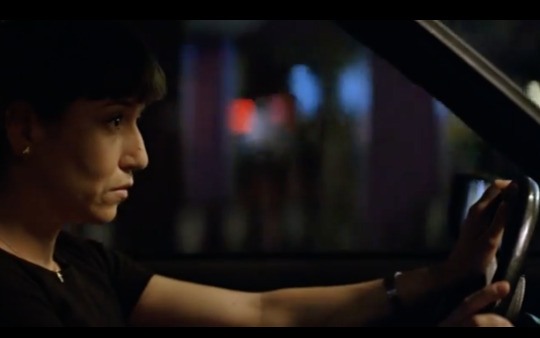
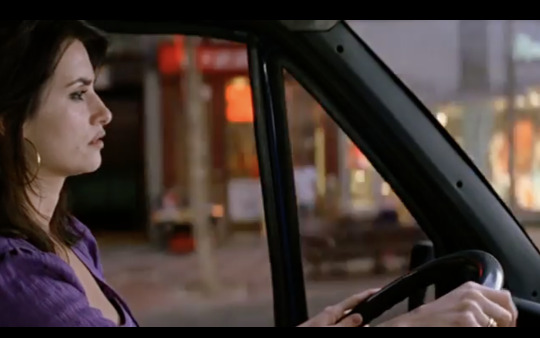
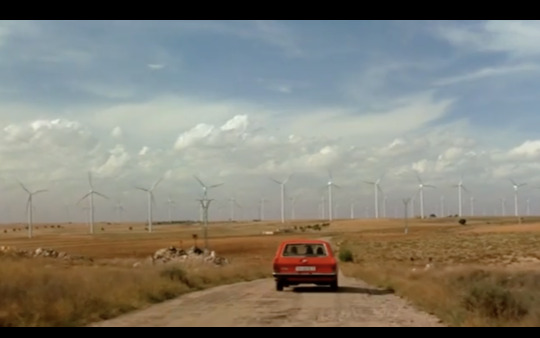
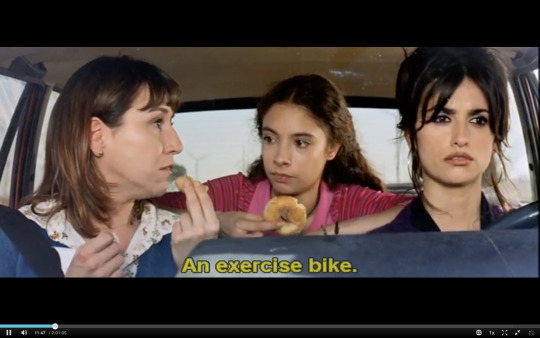

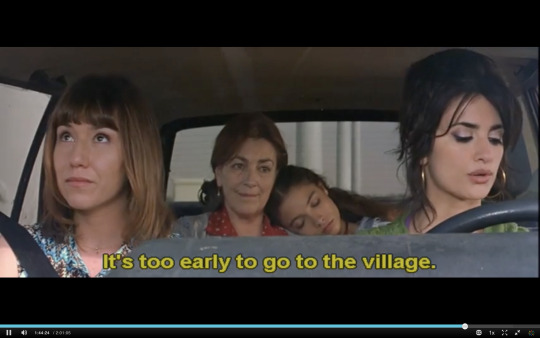

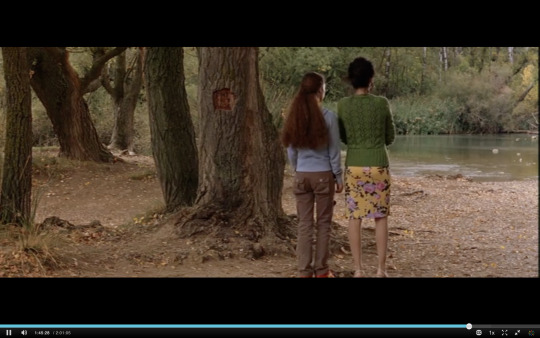
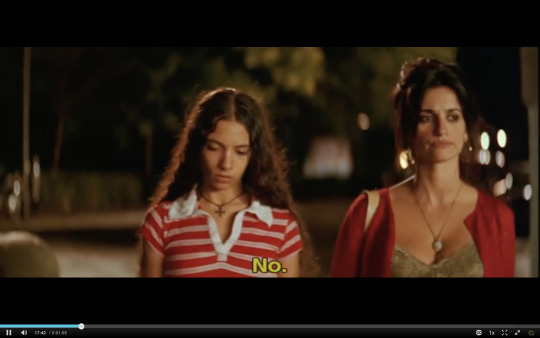
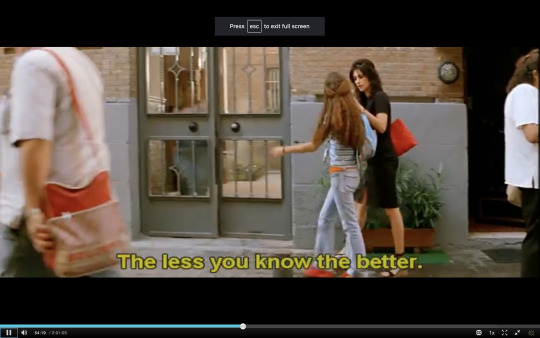
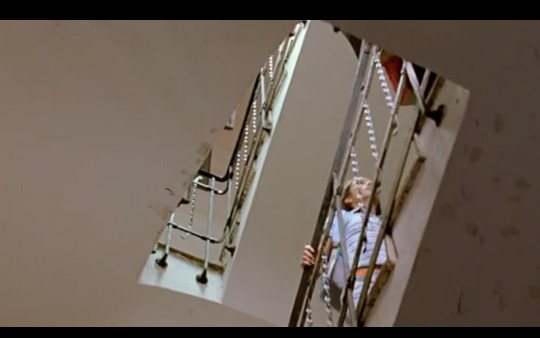
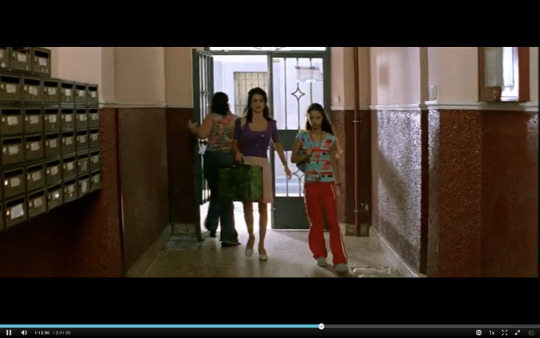
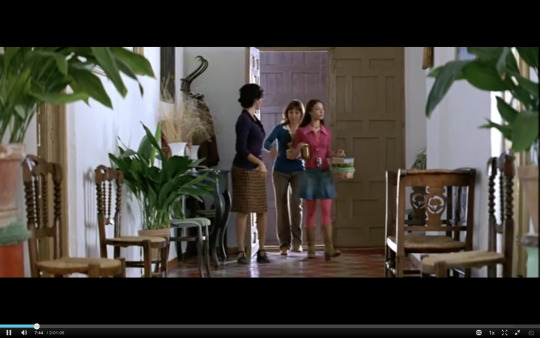


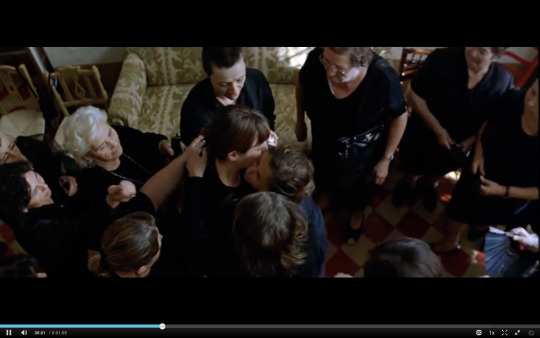
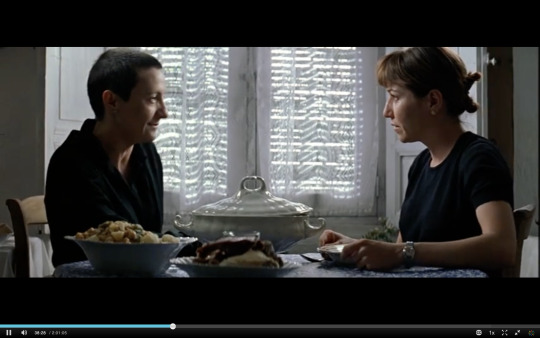
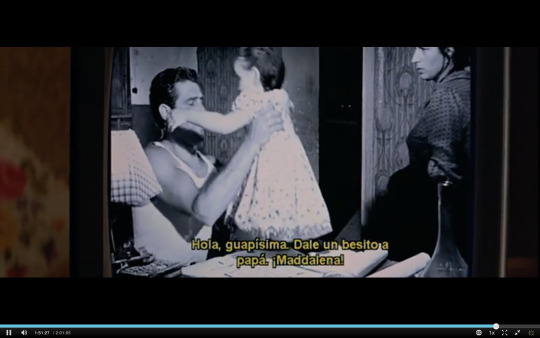


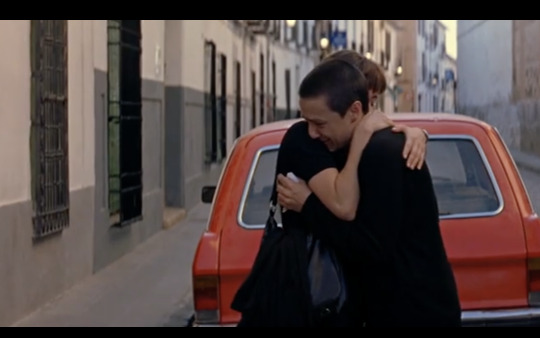
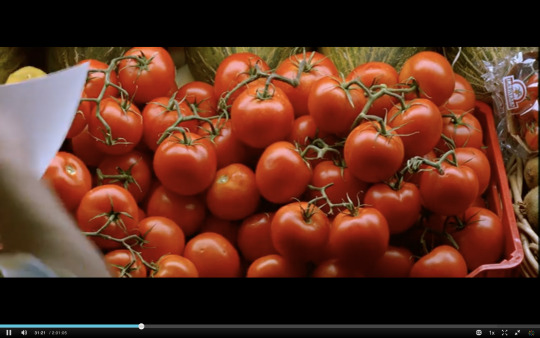
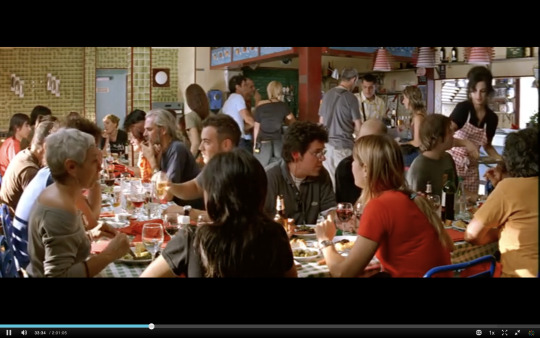
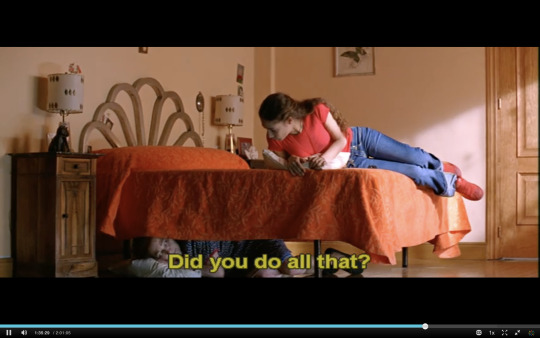
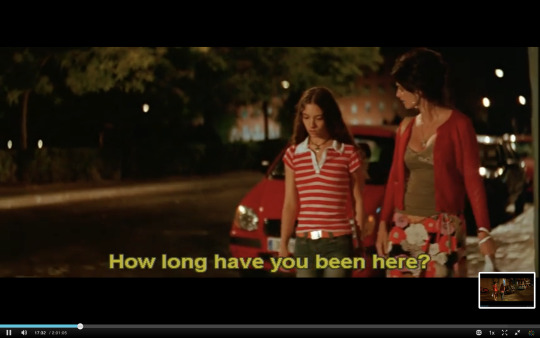

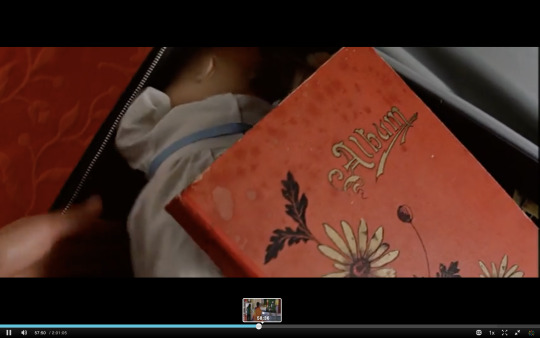
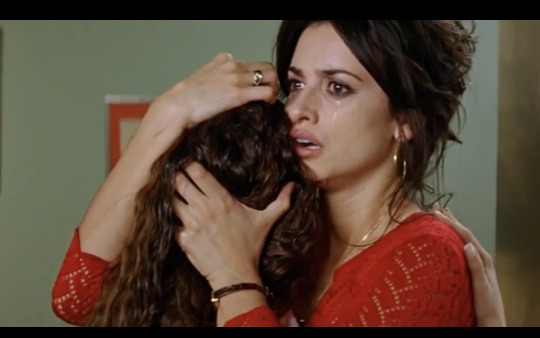
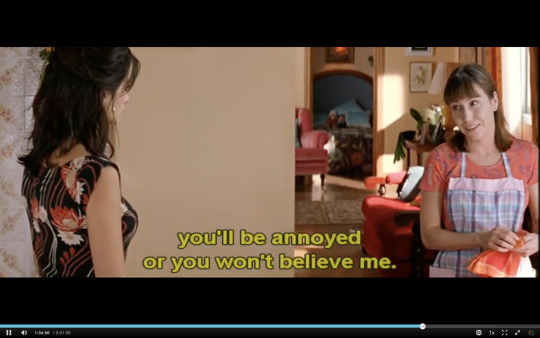
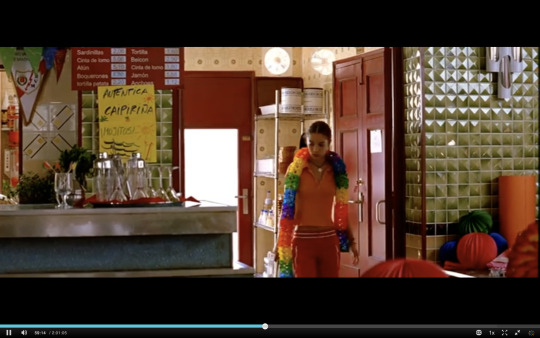
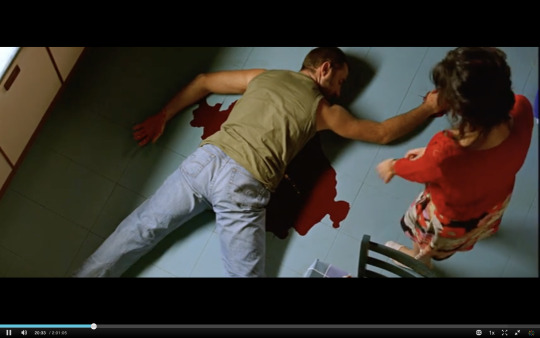

---------------------------------------------------------------------------------------
References
Merin, Jennifer. “Jennifer Merin Interviews Pedro Almodovar Re ‘Volver.’” ALLIANCE OF WOMEN FILM JOURNALISTS, 13 Dec. 2006, awfj.org/blog/2006/12/13/jennifer-merin-interviews-pedro-almodovar-re-volver/.
Team, Amuse. “A Musical Tour of Ibiza.” Amuse, 24 Mar. 2021, amuse.vice.com/en_us/article/bvg3p4/a-musical-tour-of-ibiza.
Lester, Paul Martin. Visual Communication: Images with Messages. Sixth ed., Michael Rosenberg, 2014.
Almodóvar, Pedro, Agustin Almodóvar, Esther García, Penélope Cruz, Carmen Maura, Lola Dueñas, Blanca Portillo, Yohana Cobo, Chus Lampreave, Antonio . Torre, Carlos Blanco, José L. Alcaine, and Alberto Iglesias. Volver. , 2006.
19 notes
·
View notes
Note
Hi! I'm the anon who asked you about advice for speech patterns with OC characters--absolutely love love loved your advice btw, it wasn't too much at all! I'm just struggling to write a character who grew up really close with their siblings and trying to not make them sound like either of them while still sounding like they grew up together. I want to be able to write dialogue without using tags sometimes and be able to know which character said what. Any more suggestions?
How many shows have you watched with close siblings recently? If any, spend some time analysing what they do in depth. And I’m asking about shows because actors can help you get a very clear feel for differences in character and tone, and should be easier to analyse from that approach than books would be.
I’ve recently watched Supernatural, with the two main characters being brothers who have spent literally almost the entirety of their lives (save for a stint to college for one of them) by each other’s side in close proximity. Nonetheless, I don’t think I’d have any issue telling who is speaking in a fic even if the dialogue had a sum total of zero (0) dialogue tags -- even (maybe especially) if the whole fic was just dialogue back and forth. I could most definitely write a fic as such, partly because I can hear their voices in my head if I were to close my eyes and try, and being able to “visualize” those voices makes it so much easier to ensure they stay distinct from one another.
This is because the writers and actors have done a great job of giving them really similar speech conventions in some ways (as a baseline example, they both use the word “dude” in exactly the same ways) but also have their own quirks (for example, one has what’s almost a catchphrase of “so get this” and the other doesn’t really say that). Each voice is distinct, and it’s a lot less about specific word choice and more about how the way they speak relates to their character and character’s identity: hesitations, pauses, voice raises, cut-off words, interrupting the other, longer or shorter sentences, etc.
So pick out some things that you think both (all? not sure how many there are) of your sibling characters would have in common, and some things that would be unique about them. Does one use bigger/more erudite words than another? Does one swear more than the other(s)? Did one internalize the use of “so, like” from their peers where the other(s) didn’t? Does one raise their voice more than the other?
And do they all refer to things using some common terms? Do they have inside jokes and references that you can use to show how close they are? Does one tease the other more? Is one more terse than the other?
I think you should be very clear about who these characters are inside your mind, and work to let that influence their voices as they come out on the page. Make sure that you’re writing dialogue as a fluid and living thing, rather than rigid. What does that mean? Look at these examples:
“you do not know what it means to me,” he said.
“you don’t know what it means to me,” he said quietly.
“you don’t know what it means to me” he said, voice quiet, pausing every second word with eyes downcast.
“you don’t... you don’t know what it means,” he all but whispered, so quiet that the faint “to me” was almost lost to the floor as he lowered his head.
Right, okay, I think I’ve got your attention. You’re seeing how there’s different ways of conveying hesitation, tone. Now let’s put that into a conversation without dialogue tags, and you can tell me if you think it’s obvious who’s speaking and how these individuals are different:
“you’re not going and that’s final!”
a pause, and then,
“you don’t... you don’t know what it means,” he all but whispered, so quiet that the faint “to me” was almost lost to the floor as he lowered his head.
“you - dude - what? where is this coming from? since when - ?”
“i... nevermind.”
“no, not nevermind! talk to me!”
“i shouldn’t’ve even brought it up.”
“yes you damn well should have, you - “
“would you - ...”
“would i what?”
“i... just would you ... stop... demanding. okay? i get that you’re worried, i do, but it’s...”
“[name]?”
“it’s my decision.”
(And scene)
Okay so obviously I’m in the mood to write something maudlin because idk what that even is, but I hope it managed to convey that one character is raising their voice (exclamation marks, short imperative sentences) and is worked up in a way that has him agitated (he cuts himself off it ends with “-” rathe than “...”). You know that even though he might be close with the other person, he is different than him, and is used to giving orders or taking charge.
whereas the other (let’s assume younger) brother here is hesitant, quiet, using a lot of ellipses (...) as he trails off, even after he cuts himself off you get the impression that he wants to say more but is hesitating to. the “okay?” could be interpreted as a louder “okay?” if it was said by the other, because it’s in it’s own sentence and not just modifying the previous sentence, but here (hopefully) you get the impression that it’s this character taking a second then pushing what he’s saying a bit. not “just would you stop demanding, okay?” but “stop demanding. okay?” by separating it, i’ve made it a question rather than a command.
this younger character is also using qualifiers and adverbs (”just would you” not “would you” or even “would you just”) to soften his speech, whereas the older one is using swears to intensify his.
but neither of them are using any particular word choice here that would stand out, and they’re both comfortable with contractions, and repeating each other’s words back and forth in a way that makes it seem like they’re probably comfortable using the same language (nothing is in scare quotes when they quote/repeat things back to each other). there’s nothing here that stops them from being raised close in a way that means their speech is similar.
So - that’s uh, my weird advice, i guess. get their voices in your head as best as you can, in a way that matches the character and their personality and their role as a sibling to the other (as well as the mood and emotions within each scene!), and do your best to write your dialogue a bit fluidly so that all those little idiosyncrasies that create tone (hesitations, pauses, full stops and new sentences, questions, exclamations, interruptions, etc) all come through naturally without requiring dialogue tags and description to make it come to life.
Final piece of advice on this: trust your reader. unless you screw up the order of who’s talking, they should be able to follow it back and forth. you can toss in a dialogue tag here and there if it gets to be an especially long exchange, or do what i like better and toss in other information about how they’re feeling or responding or what they’re seeing to help situate the reader in the correct PoV, but for the most part readers can follow a flowing conversation so long as they know who spoke first and you keep the back and forth exchange clear.
#writing advice#writing reference#writing#writing resource#redhead vs. writing#dialogue#dialogue tags#hope this helps#honestly just give it a shot and see how it comes out#have a little faith#and play around with it#i love taking out dialogue tags#(lmao not me having written an entire buzzfeed unsolved piece without a single dialogue tag#that was a delightful challenge#anyway)#lovely to hear from you and good luck with the writing!#Anonymous
26 notes
·
View notes
Text
Binge-Watching: Haikyuu S4, Episodes 11-13
In which the animation finally starts kicking ass again, Tanaka has an unexpected development, and round two gets off to an intimidating start.
Adrenaline Rush
I’ll admit, I was more nervous about this season’s animation than I let on. Haikyuu’s tournaments are all lengthy affairs featuring tons of matches in very close proximity, all of which require consistently strong animation to keep the hype going. And considering how the animation hasn’t been up to par throughout much of season 4, it wasn’t clear if they’d be able to give nationals the sakuga spark it needed to work. What if they just couldn’t keep the hype going and the whole thing ended up disappointing? Well, I’m happy to say that so far, those fears are entirely unfounded. Because now that the tournament’s started, holy shit has the animation bounced back. The earlier awkwardness is all but completely gone, and the hard-hitting, fast-moving, fantastically weighty and impactful Haikyuu I first fell in love with is roaring back into action at last. The bassy impact on Himekawa’s underhand serve that sells its dizzying ferocity, even when he ends up beaniing his teammate in the back of the head (”That was such a beautiful sound!”)! The super-long rallies where the ball bounces back and forth at lightning speed and everyone sweats gallons for the sake of a single point! The ball smashing against the court like a meteor when sent from a powerful spike! Sharp editing and lightning-fast camera movements! The thrill of watching bodies race back and forth across the court, pushing themselves to their limits! It took some time to find its footing, but Haikyuu is back, baby!
And with the animation in full swing once more, it’s finally able to sell the true weight of the characters’ journeys once again. The third-years collectively owning the end of Karasuno’s first match, securing their first victory, comes with a spectacular rally that showcases all their collective badassery. The brief glimpse we catch of Nekoma’s first match instantly sells them as a force to be reckoned with thanks to some incredible camerawork and smear frames. Hinata’s foil, fellow little giant wannabe Korai, showcases his incredible jumping ability with a leap that feels like something out of Masaaki Yuasa’s super-fluid expressionist playbook. And when Hinata’s epic leap in the next match mimics that same animation style, you feel instantly how much Kuroi’s determination as a fellow shorty in a world of giants must have inspired him (even if he’s so distracted by that inspiration that he forgets to swing at the freaking ball, because Hinata is a dumbass and I love him very much). Even little moments like Hinata catching the ball with his face for the umpteenth time or Daichi saving a bad hit with a knuckle bop sell how much better they’re getting at this whole deal. Hinata’s honing his ability to read the entirety of the court, Tsukky’s getting better at setting to people’s needs, and the whole team is working together like never before. And every last hit, catch, and impact tells that story just as much as the dialogue.
When Suddenly, Girl
Of course, there’s still interesting stuff happening off court just as much as on it. And it looks like Tanaka’s going to be the focus of one of Haikyuu’s most unexpected turns yet: a romantic subplot! No more endlessly dancing around Kiyoko, we’ve got an actual love interest in the house, baby! And while I was initially a little nervous about how this would shake out- let’s be real, Haikyuu has never been the best with its female characters- I actually really like the direction it’s going on. Tanaka’s childhood friend Kanoka was bulled as a child for being unusually tall, so Tanaka introduced her to volleyball, a place where being tall was something to be proud of. In a way, she’s the opposite of Hinata; volleyball was a place that welcomed her with open arms, and she fit in so well she quickly rose to became one of the most promising young female players. In fact, she’s gotten so good at this point that Tanaka is feeling left behind by her skill. She’s getting better and better, soaring to higher heights, and he’s anxious about not being able to keep up. But Kanoka doesn’t care for him any less for it; after all, he was the one who inspired her to take this path in the first place. It’s thanks to his encouragement and support that she’s as good as she is today. And now, she can ask him to cheer her on from the stands as she shows him just how much his support has been worth. Which, honestly, how many times in sports narratives do we get a situation where the girl is the star player and the guy cheers her on from the audience? I feel like I haven’t seen that before, and lemme tell you, it’s really refreshing. For once, Tanaka gets to play support, cheering on the girl he loves while he pushes himself to improve and keep up with her. That’s a story I can get behind. Especially when we so quickly clear up that potential bullshit misunderstanding that could’ve thrown the whole thing on the trash heap. Seriously, thank god he found out that other guy was her cousin so quickly, the last thing this show needs is the worst parts of shoujo manga creeping in.
Second Day
But put that aside for now, because it’s time for Karasuno’s second match! And this one isn’t gonna be as much of a pushover as their first one; they’re up against Inarizaki, arguably the second best school in the entire lineup. Their match has only just begun, but the pressure is already on like Donkey Kong. We’re up against a pair of twin brothers who dominate the court with powerful serves, plenty of star players all around, and intimidation from a completely unexpected source: Inarizaki’s cheering squad. Yep, remember those fan sections in the stands on every match where people cheer their schools on? Well, Inarizaki’s fans have refined that to a combat tactic in and of itself, booing opposing setters to throw them off their game and cheering for their best players, even if those players don’t exactly appreciate it. It’s not the kind of pressure that Karasuno usually has to deal with, but it makes a lot of sense in hindsight; the psychological battle if just as important as the physical battle, and the surrounding environment is just as important to that battle as anything on the court itself. If a higher-than-usual ceiling can throw people off their game, an unexpectedly targeted cheer squad isn’t too unexpected a threat. Let’s hope our crows from the garbage heap can fly high enough to overcome it.
Odds and Ends
-YIKES THAT ONE BOWLED HIM OVER
-Lmao, rubbing their shirts to calm down from the tension of that rally is a mood.
-”How about adding “thunder” at the end?” Nishinoya’s got a theme and he sticks with it.
-Ugh, I feel so bad for Kinoshita. When you can tell you’re improving but you’re still not where you need to be, that’s when it sucks the hardest.
-”Let’s just take that... yeah!” Even the cheerleaders are caught off guard, lmao.
-”Sugawara, could you not mimic my voice?” kjsdhkdshf but why tho
-”Is he Weary-shima already?” “That jerk definitely just blamed it on me!” good fucking bye
-”I wanted to play in the main arena!” god dammit Bokuto control thyself
-I feel ya, Asahi, watching games is nerve-wracking in and of itself
-”I need to go check out the new t-shirts too.” sdkjfhsdfh Kageyama I love you
-”I mean... the number of people watching doesn’t change...” Lmaaaaao, Akashi’s such a good manipulator.
-”If I look away, I lose!” skdjfhskjdf fuck’s sake Hinata
-”Go on, apologize to the nice lady.” I like them already.
-It’s interesting how Korai both resents people talking about his height like a disadvantage and yet acknowledges that disadvantage himself.
-”You definitely have a chance.” askjalskja Ennoshita best bro
-”Which means... I’ve just been born?” Tanaka I swear to god
-”He’s not weak, though, so I think we’ll be okay.” Alright, Kags, you saved it. Well done.
-”Shut up, you human tangerine.” dkjfhskjdfhskjdfhskjdf
First cours complete; let’s see what cours two has in store next time. See you then!
#anime#the anime binge-watcher#tabw#haikyuu!!#haikyuu#haikyū!!#shoyou hinata#hinata shoyou#kageyama tobio#Tobio Kageyama
6 notes
·
View notes
Text
The 2019 Charlie’s Angels Reboot Was A Good Project & Deserved More Respect From Hollywood
We’ve just finished watching the film and there was a lot both J and I really enjoyed about it. We’re critical of media and art in different ways and I certainly don’t speak for them, as for me, oddly I’m lenient in ways that they probably aren’t when it comes to production and culture. I don’t have to dive too deeply into the cultural response to this picture to know how it went down, I’ve come into contact with just enough of it to have a clear understanding of the popular digest. The response is not at all unexpected, it’s just uninformed.
I feel that the 2019 (year of publishing) Charlie’s Angels reboot was a good project with a wonderful spirit. Elizabeth Banks’ aims were clearly evident in the final product, however it may have been shaped along the way, and that it was under-served in the production process likely from the very beginning.

This casting is fantastic.
I do wish there were better cast-ensemble promos for me to lift from the internet and wonder whether that’s another telltale sign of production or whether the heat has just faded since release and they’ve just dropped out of the archives but I struggled to find well composed images.
The first short sizzle-teaser I ever saw for the film, I thought was quite good. Neckbeards and mouthbreathers won’t have paused for a second thought before launching hate for the project - anything in the most vague proximity of feminism or empowerment of women, or even simply just not being centred around men - will be enough to bring snide internet snark by the truckload. It remains interesting that men continue to struggle to live in a world where there can be things that also exist that are not for them, they cannot simply let these other things also exist without contributing in some way. As it were, the project looked good. Sharp, clever, playful, and a timely reboot reclaimed in the most contemporary way. When I looked up the production details and found out Banks was championing it herself, I really took an interest in it. As the first full trailers released, the casting looked great - genuinely diverse and with real chemistry, I hoped it would find the audience it was looking for.
J and I have had a lot going on in our lives over the last two years and still do. We’ve gone to theatres I think twice in that whole time, maybe three times and I think two of those were gift certificates generously paid for by family. So tonight we finally got around to watching Charlie’s Angels. If we’d seen this in theatres, I’d have still be satisfied and had the same evaluation.
A production budget of $55 million is low-balling a project of this scope;
There seems to have been a bit of pre-production shuffling and Banks did a lot of wrangling herself early on.
The whole shoot front to back was just over two months and I assume three countries, US/or studio inclusive.
CGI is noticeably subpar but not exactly cheap either, so it still would have cost a significant portion of that prod. budget. When I say subpar, the CG in this film isn’t bad, please don’t take that criticism as overly negative of the CG artists’ work - remember that people do the best they can with the time and money they’re afforded. If you want to understand what that’s all about, I encourage you to watch Corridor Crew’s channel on YouTube.
Combat choreography with principle actors isn’t great, there’s far too much editing but again, I’m betting there wasn’t a whole lot of money and thus time for training and rehearsing for them, so combat is noticeably slow.
2nd Unit photography looked very good because this kind of thing is very old-school Hollywood in that it contributes to what makes an action/spy movie look like one. Unfortunately, that means it was also expensive. We’re really running out of money here...
There is a lot of licensed music in this feature which isn’t cheap at all. Again this feels super old-school Hollywood and definitely demographic targeting, but it firmly timestamps the feature - any film, really - and unless your film is about capturing the essence of the time IT WAS THE 80′s! or FOLK FESTIVALS JUST BEFORE COVID BROKE OUT as an example of not necessarily wanting to capture the past, I really think trying to nail down pop songs of the hot present ultimately does your film a disservice.
And I’ll address that one first because I feel like it may have been one of the easiest changes to make to lift the overall quality of the picture. Instead of burning thru an immense amount of budget on a pile of pop licenses, I think a calculated risk could have been taken in getting a young contemporary musician to create a slick electronic score in its entirety to back it along side the generic orchestral action fare, no disrespect to Brian Tyler. To be honest, Tyler probably could have done it all himself but was also probably just writing to spec. BUT HEY... WHY NOT SCOUT FOR ANY NUMBER OF AMAZING WOMEN OUT THERE WHO ARE PHENOMENAL ELECTRONIC MUSICIANS AND PRODUCERS what am I talking about it’s Hollywood...
This is what I mean by the project deserving more respect and being under-served. Hollywood doesn’t believe in projects like this, they don’t realise what the project is and why it needs frontier, sincere, good faith hiring and instead under-funds but funds it nevertheless SEE? WE FUNDED IT, WE DID THE GOOD THING, SEE US SUPPORTING THE WIMMINS? WE’RE NOT SEXISTS YOU CAN’T SAY WE’RE SEXISTS YOU CAN HAVE YOUR FILM oh it didn’t do very well except we didn’t let you make it the way you wanted to make it, we still shackled you to
THE SAME TERRIBLE HOLLYWOOD TRADITIONS THAT, BY THE WAY, ARE FAILING OUR MANLY MAN MOVIES FULL OF MEN HOLY SHIT THE DEBT-RECOVERY CYCLE IS REALLY DOING A NUMBER ON OUR INVESTORS I SURE HOPE WE DON’T HAVE TOO MANY CONSECUTIVE FAILURES OR, SAY, SOME KIND OF GLOBAL CATASTROPHIC AND/OR ECONOMIC EVENT HAND-WRINGING
ahem where was I
Trent Reznor and Atticus Ross provided the entire soundtrack for The Social Network and it’s both fantastic and timeless. OK oranges and refrigerators, but the principle still stands - I get the intent of Charlie’s Angels was a summer blockbuster but it would have still been elevated by being all the more slick having its own identity in music, having its own sound. You want that soundtrack by that amazing young woman because it sounds fucken awesome.
Charlie’s Angels still needed a few passes by a dialogue editor. I say that a lot. I know my standards are high and it’s a Hollywood film. There’s no problem at all with the vernacular, idioms and the casual language, that was all fine. It’s always just the little details - again, it’s always time and money which - really is just money. A good dialogue editor or script supervisor might have been able to just elevate this whole thing to that super-smooth level of flowing just right. Or perhaps if the actors had spent more time in training and combat rehearsal together, they’d have riffed better and improvised more. They still have good on-screen chemistry but again, more time - more money for time - and things improve.
If you don’t know my taste in film, you could see if you recognise anything in the Film Notes page of this journal, but it’s totally OK if you don’t. Basically most of them are long and boring, with super long takes of people not saying or doing much. I still love Hollywood films tho - I love all cinema and I’ll repeat like a broken record, I should either add a section to Film Notes of my favourite blockbusters or create a page for them. Anyway - Charlie’s Angels still has too much editing mostly due to the aforementioned combat, but also because of that good old Hollywood formulaic style-guide. It’s easy to look up the production credits and pluck out names but on a project like this, it’s difficult to pin the end result on the roles themselves. In these cases, personnel like editors are more like daily jobs rather than creative contributors which again is an immense shame. I catch myself before saying “It doesn’t have to be a Malick/Shortland/Lynch project...” but why not? Why can’t a summer blockbuster have its own fantastic identity? General audiences can identify Michael Bay and Christopher Nolan - sure, one or perhaps both of these people take themselves far too seriously, but why not let a project have its own identity?
We run back into the conversation of protecting investments and style guides.
The easy answer to Bay and Nolan is they’re men, but they’ve also had time to prove their worth over time with previous work and track record. Because they’ve had the privilege to do so. Because they’re men. And most of the people making decisions and letting them experiment and sometimes fail to recover investment on their projects and hey, don’t worry, just try again, are men - and they were permitted to try again because they were themselves men.
Whether individual men do or don’t deserve whatever they did or didn’t get, I’m not here to discuss. Many of them definitely didn’t and I can’t change it.
What we should be changing is how we finance, how we empower and how we hand over autonomy of projects to women in cinema, in the arts - in professional life, in any industry.
YOU DON’T KNOW THE DETAILS OF THIS PROJECT
So.
Fucking.
What.
I can make educated guesses and I can support as much as possible as fair and equitable an arts industry wherever I engage with it.
I really liked Charlie’s Angels. It had a lot of heart. It had a wonderful sense of play and sass and smarts. Yes, a few too many “why didn’t they just shoot the bad guy” moments etc. - again - script reviews, better writers, more time...
More money.
More respect from an industry that doesn’t respect women and women’s autonomy; social, professional, in all aspects.
I hope Elizabeth Banks wants to make another one, can raise the finances for it and has even more control of the next project. More power to her.
1 note
·
View note
Text
Violence in Fallout 3
[This was originally published on VerticalSliceMedia.com in 2018 and is republished from the latest draft I have]
Somehow I found myself playing Fallout 3 for hours on end recently. I am unsure when the desire to revisit it began. Before, I spent time rewatching Joseph Anderson, Noah Caldwell-Gervais, hbomberguy, and Luke Stephens’ analysis videos on various entries into the franchise. This interest might have been spurred by questions about the upcoming Fallout 76 (What’s the risk if death doesn’t set you back? They’re talking about crafting becoming more important such as making ammo but are they going to severely limit your resources? How are there quests with no NPCs?), which in turn had me thinking about Fallout 4 and about booting up Fallout 3. I do think a major factor was a curiosity about some of the conversations sprouting up about the Fallout franchise in wake of Bethesda’s reveal and marketing with 76. Mainly, claims that Bethesda had forgotten, or simply was uninterested, in the major themes of Fallout and Fallout 2 regarding Americana. Vault Boy went from being an unethical corporation’s propaganda tool that fed off of the “innocent” American culture of the 1950’s to being the aesthetic core around which Bethesda’s Fallout games rotate with little of that original satire intact.
Fallout 3’s introductory chapters weren’t as long as I feared, but as boring as I expected. Vault 101 imparts on the player the following: your father loves you very much, dialogue choices generally lead to the same outcome, morality is binary. Childhood bully Butch offers the first truly consequential moral choice: the player must choose whether or not to let his mom die from radroaches. Fallout 3 asks, “Butch has been nothing but an asshole to you throughout this introduction, so why not pay him back by allowing his mom to die or killing him yourself?” Except Butch’s mother is not responsible for his actions, and even if she was why would I let her die? This is an issue that enraged me while watching Riverdale, where multiple characters can’t seem to understand that a child is not responsible for their parent’s actions and vice versa. Immorality in this situation is straight out murder by inaction, and the rational thing to do is rewarded with good karma. Nothing about this situation is challenging or complex, and this begins the trend of simplistic and erroneous moral choices throughout Fallout 3.
Immediately proceeding your escape from Vault 101, you will make your way to Megaton the closest Wasteland settlement and host of another moral dilemma, an active atomic bomb that serves as the town’s centerpiece. In Moriarty’s bar you encounter Burke who requests that you activate the bomb in order to destroy Megaton. Surely as a non-resident you won’t care if this town of civilians is obliterated. Overlapping this quest is Tenpenny’s Tower. In it the player either kills Roy and his ghouls or kills Tenpenny and his tenants, there is no third option. Even if you forcibly evict the residents who would protest the ghouls’ presence, or convince them that the two factions can live peacefully, Roy will eventually murder everyone after a dispute, and you will gain negative karma should you follow this up by murdering him and his group. Both of these quests are so simplistic. Why not have the Church of Atom move the bomb elsewhere so that they can set it off and fulfill their religion without endangering the entirety of Megaton? Why is the best option to force two mutually hateful groups into close proximity? Roy and the ghouls in this scenario are so obviously a stand in for racial tensions in the US. Why create his endpoint to be as abhorrent as his oppressor Tenpenny, who would just as easily have Roy killed simply for existing as a non-human?
Ghouls in general are not served very well here, as a large majority of them are rendered feral and ripe for killing, nothing more than mindless zombies. Likewise the raider and super mutant factions, those you will be killing hundreds of throughout the Capital Wasteland are dehumanized as much as possible in order to justify your mindless violence towards them. The lone example against this if Fawkes, who only exists due to his upending of the expectation of every super mutant being a mindless monster. Three Dog spends the early hours warning listeners of the brutality of raiders towards their victims, and super mutants likewise are larger more menacing humanoids that kidnap people to create gore nests. These enemy factions are mindlessly evil and violent, and the player gets to reflect that violence back onto them.
Fallout 3’s first and third person shooting mechanics are very bad, but they are redeemed by the V.A.T.S. system, which freezes time, allows the player to highlight specific limbs, and unload in slow-motion, action edited clips. The system exudes cool, which was the obvious intent of the mechanic. Bethesda wanted to highlight the bloody violence they had created, both in how the enemies mindlessly terrorize the world, and how the player mindlessly guns down anything highlighted in red. I like the VATS system despite its over the top violence, where limbs can be severed by a punch and heads are regularly obliterated in a bloody fashion. An early perk called “Bloody Mess” enables more violent death animations if it wasn’t enough. The description for this perk focuses on the visual entertainment and treats the statistical bonus as an afterthought. This shows that Bethesda wanted the violence to feel cool and impressive and addressed the role-playing elements afterwards.
The world of Fallout 3 is brutal and unforgiving. Jericho raped Jenny, but no one is pushing you to avenge her. Hell, he can even join you on your explorations if you are despicable enough. Slavers place bomb necklaces on wasteland wanderers, kids lose their parents, people get kidnapped and tortured and killed but its all just set dressing so that you can loot a mutilated corpse for bottle caps. Vault-Boy will pop up after you’ve murdered a town of civilians to let you know you’ve leveled up and present some rewards for the good time you’re having. The tone is off, and it is a problem sadly not unique to Fallout 3.
Both the karma system and the violent tone are things I see as complaints from those who have played Fallout and Fallout 2, or at the very least New Vegas, when talking about Fallout 3 and Fallout 4.. Even as someone who hasn’t put significant time into any of those games I still see the faults in Fallout 3. And yet I keep feeling drawn back to the Capital Wasteland, to find locations I hadn’t on my initial playthrough and to touch on some DLC I never engaged with previously. Fallout 3 presents a dangerous and bloody world that is treated like a playground, one that makes it easy to be a good guy and doesn’t want you to feel too bad about killing everyone in sight.
5 notes
·
View notes
Text
To Kill a Mockingbird
After having watched Robert Mulligan’s film adaptation of Harper Lee’s novel entitled, To Kill a Mockingbird, I noticed that the director depended more heavily upon physical form in order to relate the points he wished, while Lee depended on her ability to paint pictures with her words. For example, writing as an art form, necessitates language, which clarifies the many different aspects of a story, (i.e. setting, character development), whereas film requires it to a lesser degree. This is due to the fact that if an author failed to give a description of his/her characters, the story’s setting, etc., we wouldn’t know what anything looked like, or was like. In order to relay things such as appearance, filmmakers, on the other hand, need only “dress up” their actors in the way described within their script, and choose those they feel fit the image of their story’s characters. Then, when they are watched on screen, viewers instantly know all they need to about their appearance- whether or not they are young or old, how they tend to dress, what color their eyes are, what color their skin is, etc. In addition, they also learn more “complex” facts, such as if they have a meek demeanor, or hold themselves in such a way that suggests that they are courageous, or even full of themselves.
In addition, I have noticed that both Mulligan and Lee use similar methods of relating the nature of each of their characters. For example, they may use a character to describe another, such as when Lee had Mrs. Maudie describe Atticus to Scout in her novel. She writes, “if your father’s anything, he’s civilized at heart. Marksmanship’s a gift of God, a talent- oh, you have to practice to make it perfect, but shootin’s different from playing piano or the like. I think maybe he put his gun down when he realized God had given him an unfair advantage over most living things. I guess he decided he wouldn’t shoot till he had to, and he had to today,” (Lee 112). Readers, now equipped with this knowledge, come to a deeper understanding of Atticus as a person. They come to realize that he is a “civilized” individual, to use Mrs. Maudie’s term; a person who sets a certain expectation for himself, that he will act a certain way around other people, and hold himself in a certain light. He expects himself to maintain a certain moral code, and fight “fair” during all of his conflicts with other people, and the many obstacles that the world may throw in his path. Although Mulligan depended on this technique far less than Lee did in his film, he still employed it from time to time. In addition, each of the artists used the story to relate certain facts about their characters, without having to express these facts explicitly. For example, the depiction of the three children- Dill, Jem, and Scout- playing with the tire was used to betray their often childish and playful natures. Another example would be when Scout is shown getting into a fight with Walter Cunningham in the movie, and when she is described as getting into one in the book. In addition, the knowledge we gain of her wanting to fight more in both mediums, (from Scout’s narrations and other sources), allows us to discern the fact that she is more “masculine” than “feminine,” childish, aggressive, and fairly quick to anger.
In the novel, Harper Lee uses a mixture of descriptive language and dialogue in order to paint a picture of a mad dog, threatening the town of Maycomb. She uses the dialogue in order to push the scene along by having both Scout and Jem bring up the dog’s existence, while using descriptive language to add to the scene. By adding detail, she further brings the story to life. For example, Lee writes, “Jem gulped like a goldfish, hunched his shoulders and twitched his torso,” (Lee 106). By evoking a mixture of images, which relate the fact that the dog appeared as though it were having trouble swallowing and breathing, as its spine had been curved in an atypical fashion as an apparent side effect of its disturbing trembling, readers come to the conclusion that the creature is frightfully ill, perhaps even deranged, as some may associate the trembling with seizures, or fits of epilepsy. As the scene progresses, dialogue is used to elicit clarifying information, while descriptions are used to accentuate the tone, mood, and setting of the scene. For example, “Calpurnia’s message had been received by the neighborhood. Every wood door within our range of vision was closed tight. We saw no trace of Tim Johnson. We watched Calpurnia running toward the Radley Place, holding her skirt and apron above her knees,” (Lee 107), describes the fear elicited by the sight of the mad dog. It sets a mood enriched by trepidation, and sets a frantic tone. Clearly, the entire town is frazzled by the sight of this dog, which is said to be somewhat out of place, this time of year. They cannot seem to fathom how such an occurrence came to be, and this simply adds to their sense of unease. The fact that the children are urged to remain within the house, and only two men- Atticus and Heck Tate, dare to venture out into the street to stop the dog from harming the town, further add to the state of alarm we as readers are meant to feel. As Lee desperately tries to get her reader’s emotions to mirror that of the city of Maycomb, she has the dog draw all the more near. Perhaps, this is to make her story “hit close to home,” as it is so proximate to the protagonist’s dwelling. Naturally, readers are meant to root for them; for the death of the dog. Thus, we as readers can breathe a sigh of relief when Atticus manages to shoot and kill the dog.
When the lenses of Mr. Finch’s glasses are shattered upon the ground at the end of the scene, readers realize its largest symbol: the children’s loss of innocence, when it comes to their view of their father. They have removed their “specs,” which made them, (as non-vision impaired individuals), less myopic. Now, they can understand the full breadth that is Atticus’ character; they can see him for whom he really is. They now understand that he is not as “simplistic” as they originally thought, in the sense that he no longer appears quite so civil and proper. In addition, he is no longer such a “boring” and “one-dimensional” figure within their eyes. Instead, Atticus becomes a figure that the children can really look up to, as he reveals a more mysterious side. He has woven an air of secrecy around himself, which has merely hinted at some of his previously unmentioned skills and traits. Being that the children naturally want to learn more about their father, they are (largely) silenced by their awe, as his use of a gun doesn’t seem to fit their previous view of him. In addition, they seem to revere him all the more as this powerful figure, who possesses a skillset they can understand, and to some degree, desperately want to attain themselves.
In the corresponding scene in the movie, Mulligan often relies on his actors and actresses in order to get the same types of information across in his film, that Lee managed to get across in her novel, with the aid of her words. For example, at the beginning of the scene, after Scout and Jem have shown Calpurnia the mad dog, she urges them both inside. She not only says, “Scout, Jem, come on inside,” but uses hand motions to demonstrate the sense of urgency within her voice, which is compelling them to go inside. Her voice and her movements, which involve not only her hand gestures but her turning her back on the dog, and moving inside to call Mr. Finch after having closed both the screen and the wooden door behind herself and the children, helps to create a hurried, and frightful atmosphere. It relates to viewers that each of the main characters is in danger, as is the rest of the town. The threat, which has thrown them into this state of turmoil, is the “angrily” barking dog noted at the beginning of the scene, ambling awkwardly toward the front of the frame. For the time being, it remained at the back of the frame with a wide, open area surrounding it, demonstrating that the threat is imminent, and will wreak havoc upon the town soon if nothing is done about it. As was the case in the novel, the dialogue, which takes place between Calpurnia, Scout, and Jem, propel the plot forward, while their actions, and the sound of each of their voices, sets the tone for the scene. No description proves necessary as far as setting is concerned, as we can clearly see that the characters start outside of the Finch’s residence, (which allows them to make note of the dog), before progressing into the household, (so that Calpurnia can keep the children safe and warn the rest of the town), before progressing outward and into the streets again, (so Mr. Tate and Atticus can dispose of the threat). Once the scene moves back to the area just outside of the Finch residence, we can see the threat, (the mad dog), ambling up the street. The frame tightens as the dog comes closer and closer, until it shows the dog as being only a few houses down from the Finch’s. At the far end of the screen, we can see both Tate and Atticus with the gun. They stand small, as the last, dismal hope that the town has of destroying the threat the dog poses, before it destroys them. Again, the dialogue between the two characters- both Heck and Atticus- are what propels the story forward, while the actions that take place on account of the dog and the world around them, (the absence of the other town folk, the children being kept inside the house), continue the trend of general fear and urgency, which has encompassed the entirety of the scene. As the frame shifts again, we are shown a close-up of Atticus, holding the gun and taking aim. Mulligan is directing our focus to him, as we as viewers have come to realize that he is the only thing standing between the town and complete chaos. Then the scene cuts to Jem standing beside Calpurnia, which I believe is meant to remind us of what Atticus is fighting for, (and presumably, breaking his “upstanding” character for). Next, we are shown the close-up of Atticus again, and we can tell that he is nervous, for the glasses he raised to allow for sight along the length of the barrel, (which would help him perfect his aim), fall down the bridge of his nose, and get in his way. Hurriedly, he removes them, and loses his previous position. Swiftly, he forces himself to recover and take aim again, as the dog continues to bark; reminding him and us, as the story’s viewers, that the threat of the dog is still looming over his person. We are shown Tate again, who looks confused- perhaps he is wondering what is taking so long. Then we are shown Scout, who seems nervous, and Jem, who seems both confused and nervous. They are used to heighten the tension evident within this scene; the worry, which has overcome each of their hearts. Then again, we see Atticus, and he finally takes his shot. The dog yelps as it falls. The children, unaware of their father’s skill with a gun, seem shocked that he made the shot; their previous image of him had been shattered. But this seems only temporary, as Atticus once again, reasserts his role as father, when he tells his children not to go near the dead dog, which is “just as dangerous dead as alive.” The use of his gesture, (the pointing of his finger at Jem as well as Calpurnia, who is supposed to mind each of his children), assists with this transition of Atticus as the hero, to Atticus as the father-figure. His words, again, are used to propel the plot forward, and relate how the threat is beginning to ebb away with the dog’s untimely demise.
#robert mulligan#mulligan#calpurinia#scout#finch#jem#atticus#dog#mad dog#to kill a mockingbird#harper lee#lee#film#novel#literature#book#atticus finch#jem finch#scout finch#children#gun#tate#images#glasses#shatters#gun shot#shooting#original post#my work
1 note
·
View note
Text
Ways of Being Close to Characters by Jens Eder pg 68-80
Eder considers how viewers of film react to characters, offering that a viewer’s ‘cognitive and affective’ responses are ‘unlimited in their richness and variety’. She further argues that to ‘subsume the whole range’ of an audience’s reactions to characters ‘under the global notions of ‘identification’, ‘empathy’, or ‘parasocial interaction’’ is ‘too reductive’. Viewers do not relate to every character within a piece, and similarly they may not relate to a protagonist. A story or a film may be structured not to have this viewer response, but this is important to consider how and why a viewer may have a particular reaction to one character but not have the same reaction to a similar character in a similarly structured film.
Eder acknowledges the level of research in understanding character engagement by distinguishing the types of viewer responses they receive via film. This has led Eder to question ‘how can different theoretical positions be integrated to develop a more thorough account of viewers’ relations to characters and the factors that shape those relations?’.
A further acknowledgement she makes is how viewers ‘sometimes’ express feeling ‘close’ to characters they had viewed in a film – an expression that she remarks is used both colloquially and within film criticism and psychological theories. Eder explains that the expression has ‘many meanings’ which are mostly ‘metaphorical, but are systematically interrelated’. It is an expression that Eder understands to be shrouded in ‘ambiguity’ and she remarks it to be a good starting point in understanding and analysing viewers’ ‘imaginative and affective relations to characters’.
In order to understand how viewers relate to characters, Eder notes it necessary to understand how people relate to each other. In terms of feeling close to someone, there is the physical understanding – being physically close to someone – but also the mental understanding. Mental closeness is explained by Eder to occur when ‘someone has certain mental attributes and dispositions towards another person which are cognitive’ or ‘affective’. Cognitive attributes and dispositions are when an individual understands another person and thusly feels ‘familiar’ towards them. Affective attributes and dispositions are when an individual likes or ‘desires’ a person or ‘empathizes’ with them.
Another type of closeness is the ‘intimate, close relationships’ in which two or more people know ‘private things about each other’, or experience ‘certain emotions’, and interact in ways ‘not open to others’. Eder explains this type of closeness between real people is determined by ‘causality, social norms, and mental schemata’. This type of closeness may be achieved by ‘relatives, friends, or lovers’, those who often live close to one another. These people are ‘expected’ to understand each other and to ‘feel emotionally close’.
Eder acknowledges that the level of closeness in all three ‘senses’ is a matter of ‘degree’. Eder discusses that it, therefore, makes more sense to focus on the ‘’distance’’ rather than the closeness.
In regards to film, Eder reminds that a character is a ‘mental construct’ and so, it is not possible for viewers to feel close to characters in the sense of ‘spatiotemporal’ or ‘social relations’. However, Eder offers that a viewer is not prevented from imagining to being spatially close to a character in a way that is perhaps ‘analogous’ to being close to real people.
The audiovisual representations of characters which are present within film as an audiovisual medium, can be ‘conceived of as dense streams of cues’ that ‘trigger a wide range of mental reactions in viewers’ – such as perceptions, feelings, and imaginings. Film can focus on one singular character whose sole being is explored over the course of a relatively short time in comparison to real people getting to know one another. These audiovisual cues can happen so rapidly as a result, that viewers’ reactions can be intense in level or how much they may change. Film’s impact on viewers’ reactions and interpretations to characters can be ‘significantly similar’ to the reactions of real people to one another.
Eder expands on this by discussing the perceptions viewers have of filmic characters can lead to ‘cognitive states’ which associate the character with ‘relatively stable physical, psychological, and social properties’. According to Eder, through the connection or combination of several of these states (this process is recognised as ‘character synthesis9or recognition’), the viewer is able to form a ‘mental model’ of the character. She refers to social psychology which states that working models can be formed of both real people and fictional characters and these can become ‘objects of imagination’. Eder explains that to understand characters’, the audience relies on ‘partly innate mental dispositions’ as well as on schemata that is learned via interactions with real individuals. In summary, ‘character synthesis’ is based on ‘social cognition’ in encounters with real people.
Furthermore, it is important to recognise that viewers are typically aware that they are ‘perceiving fictional representations’. An audience does not act on what they observe, therefore it can be understood that they ‘withdraw’ their understanding of the real world as the audience feels comfortable in the knowledge that they are not ‘expected to take responsibility for the characters’.
Audience reaction to characters is further influenced by ‘narrative and stylistic structures’ which can ‘cue’ audience’s imagination as fictional worlds can ‘deviate considerably’ from reality. This can enhance a viewer’s engagement and ability to lose themselves within the film and as film in its entirety is a mental construct (not just the characters), the medium can create ‘unique ways’ of bringing viewers closer (in all senses) to a character. As Eder states, films are able to ‘intensify feelings of closeness’ or ‘bring forth reflective distance’. Films have the ability to show and express the inner mindset of a character, giving an audience an intimate understanding of a fictional person to such a degree that is rarely ever achieved in real life between two people. This all happens at an immense speed in contrast to real life interactions. Films can further cause people to ‘feel close’ to ‘character types’ that they may not ever interact with in real life or actively avoid. Eder regards these techniques as a ‘power’ as films can ‘guide’ or ‘control’ feelings of closeness between a fictional character on screen and the audience that witnesses their actions.
Similarly, a film can draw an audience in by bringing them emotionally closer to the character, but a film can also go the opposite way, by making the audience feel extremely distanced. For example, in In the Mood for Love (2000), the action and the dialogue is often filmed from behind objects or from behind walls, creating a sense of physical distance from the characters which in turn effects the emotional closeness between the audience and the two protagonists viewed on screen.
An important factor to consider when understanding the capability of feeling close to a character is the ‘attention’ and ‘degree of frequency and intensity’ of mental acts directed towards a character. A character that does not receive much attention from a film - for example, a character in the background - is difficult to relate to because there is no kind of interaction between viewer and character. Further, closeness is also dependent on the ‘level of authentication’ of the character by the film’s narrative. Eder offers that viewers will feel ‘less close’ to a character introduced during unreliable narration or ‘embedded’ in fiction within the narrative.
Level of closeness is also dependent on the character’s ‘contexts’, as in the kind of world they live, what laws of the fiction they must obey and the characters and situations they interact with.
Another way of understanding closeness is through the degree of ‘perceived realism of this world' - how the audiovisual elements of the film interact with the real life environments it is played in, and how this effects the viewer’s ‘immersion’ in the film’s diegesis.
A final important aspect of understanding closeness to characters, is by acknowledging the actors who play them. Viewers can feel close to actors and this can influence how an audience perceives, reacts, and remembers a character. An actor can have a significant influence on audience response.
Kinds of Closeness to Characters
There are ‘at least’ five senses to feeling close to a character which can relate to the way real life people feel close to one another, and ‘correlates’ with a ‘certain set of psychological relations that vary gradually between the poles of closeness and distance’. These five senses, Eder’s words, are:
Perceived relations in space and time: spatiotemporal proximity and paraproxemics
Cognitive relations to fictional minds and bodies: understanding and perspective taking
Perceived social relations: similarity and familiarity
Imagined interaction: parasocial interaction (PSI) and par asocial relationships (PSR)
Emotional responses: affective closeness
Feelings of immense closeness to a character can be the result of ‘affective responses’ or ‘PSI/PSR’. However, Eder informs that the topic of PSI/PSR is extensive and difficult to discuss in a format that does not have the required space for it.
Nevertheless, she continues with an overarching viewpoint of the topic, referring to what is discussed in communication studies in regards to PSI; ‘scholars often use ‘PSI’ as a generic term to cover any kind of engagement with media personae’. Eder is quick to offer a narrower definition as it is ‘more convincing’, explaining that it is better to contrast PSI with other types of engagement so as not to ‘blur’ the differences between interaction, observation, and simulation.
Via this, it can be understood that viewers may relate to characters through these three ways - as ‘distant observers watching them’, as ‘simulators taking their perspective’, or as ‘’interactors’’. Eder explains that her use of PSI is only relevant in the last sense - ‘when viewers imagine themselves interacting with a character’ or when a viewer reacts to ‘behavioural cues’ in ‘represented face-toface situations’ . For this, she offers the examples of viewers fantasising ‘about having sex’ with a fictional character, and when a character addresses the audience by speaking directly to the camera.
Parasocial relationships are understood as being influenced by ‘repeated encounters with a character over multiple viewings’. This is mostly relevant to video games and soap operas.
Eder acknowledges that despite communication studies’ research into character engagement focusing largely on PSI, many accounts in film studies ‘centre on affective engagement’. For this, she refers to Murray Smith’s model which distinguishes between two kinds of affective responses:
feeling for a character on the basis of positive or negative appraisals (sympathy/antipathy) and feeling with him on the basis of shared affects (empathy)
Therefore, Eder determines that affective closeness can take the form of ‘both’ sympathy and empathy through intense positive feelings towards a character. Further, the notion of distance between viewer and character can ‘take the form’ of antipathy ‘as well as cold observation’.
Viewers’ affective responses are constructed through ‘various kinds’ of cognitive input - through perception, imagination, appraisal, memories, and so on. Thus, it can be understood that noneffective types of closeness can be seen as ‘cognitive stances’ towards a character that ‘influences the viewers’ affective reactions’.
What can be drawn from Smith’s model is the idea that sympathy is ‘founded in the processes of recognition (character synthesis)’, as well as in alignment (’affective, particularly moral, appraisal’).
From here, Eder offers that recognition and subjective access can be seen as ‘forms of understanding’ as attachment is a ‘spatiotemporal relation’, and ‘allegiance/sympathy and empathy’ are forms of affective closeness.
Spatiotemporal Proximity and Para-Proxemics
Feeling close to a character is understood to largely relate to the ‘impression’ of feeling close spatially or temporally - these feeling are described by Eder as being ‘mostly preconscious’. Therefore, these feelings can be seen as ‘analogous to feelings of spatiotemporal proximity’ to real persons.
One way of understanding this is through the relationship between the real environment of the viewer, and the fictional environment of the character. The understanding and ‘mimetic connection’ between the setting and the viewer’s location can have ‘two diverging tendencies’. In films where the setting is somewhat familiar - in the terms of its function (a viewer may not have visited the particular coffee shop displayed in the film, but they understand the social norms of a coffee shop to relate to the scenario of the fiction) - a viewer may find it ‘easier’ to relate to the character through the impression of a shared experience or cultural knowledge. How a character reacts in these scenarios will influence and take effect on viewer interpretation as the audience accesses their own memories of experiences, and their own understanding of societal norms and values, to understand and interpret the character’s ‘traits and situations’. On the other hand, the spatiotemporal proximity may ‘facilitate the application of mental stereotypes’ which can lead to a ‘more automatic and less vivid reception’. Therefore, settings of this kind may find other ways of drawing the audience closer to its characters.
A second way of creating closeness through spatiotemporal proximity, a way that Eder expresses is ‘more dynamic’, is through the ‘extent to which a film lets the viewer accompany a character through space and time and witness his externally visible experiences’. Within film, viewers are subject to watching every relevant action of a character. This plays on spatiotemporal attachment which can ‘influence’ what the viewer knows about the character, as well as create a sense of ‘sympathy’.
Further, the audiovisual devices used within film can create the suggestion that the viewer is experiencing the same situation as the character. Not to confuse this with the idea that the viewer thinks they are physically there with the character, the audiovisual devices create this suggestion a subconscious level. A viewer will interpret that they are perceiving the ‘same situation’ and therefore they share a ‘mutual semantic-perceptual space’ with the characters. This plays into their spatiotemporal attachment towards characters. The shared space becomes the ‘basis for recognizing the character’s situational meaning structure’. If the viewer supports the character’s motivations, they may come to perceive the character as a ‘teammate’. A film can also depict very intimate and private moments of a character’s life which ‘may arouse feelings of complicity’. This can encourage viewers to feel sympathetic towards a character, bettering their understanding of character’s situation and emotions, and can therefore effect the level of closeness a viewer may feel towards a character.
However, this is understanding what is presented has an effect on the viewer. Further understanding of spatiotemporal attachment requires the understanding of how what is presented effects the viewer. A viewer can never be literally close to a character through distance - a viewer cannot sit right next to a fictional person on screen - but films can use techniques to their advantage to create the effect of physical closeness via framing or sound. Shot scales can further guide the attention of the viewer to particular elements of a character’s body language, but they can also influence viewer interpretation by inflicting a sense of physical distance. A close-up can ‘emphasize emotional expressions’ but it can also create a sense of physical distance which has an effect on the ‘para-proxemic relationship’ between viewer and character.
If you came as close to a real person as a close-up suggests, you might come into physical contact with her; she might caress or harm you. If you are far away from her, you might be estranged or at a safe distance.
Moreover, the camera angle can also effect the level of closeness by either ‘observing’ or ‘interacting’ with a character. Camera angles can play on metaphorical suggestions, i.e. characters viewed from a high angle creates the suggestion that they are weak, or in a hopeless situation, thus potentially playing on the viewer’s sympathy for them.
If framing suggests closeness in space, then plot structure, movements of actors’ bodies, and rhythms of framing, music, and editing all can suggest closeness in subjective time or synchronicity.
Eder refers to motor mimicry or the reaction of ‘mirror neurons’ which can cause the viewer to repeat character movements either physically or within their imagination, therefore implying the viewer feels ‘rhythmically paralleled or synchronized’ with a character and their actions. This can be the result of what was suggested above, as slow motion (an editing technique, or an acting technique depending on its value to the plot and genre of the film) or empty space within the frame can ‘invite the impression of time passing slowly’.
Generally, both synchronising and close framing make it easier to understand the character, to recognize his emotions and their expressions. But distant framing or a rear view can also have emotionally intensifying effects, e.g. by making the character look small or defenceless and by forcing the viewer to infer or simulate the feelings she cannot simply read off the character’s face.
Spatiotemporal proximity is split into these four aspects but they are not separate. The effect they have are overlapping and can be combined to influence viewer interpretations.
Understanding and Perspective-Taking
People can feel close to one another through intimate understandings, which can be replicated in film between viewers and characters. However, Eder argues that ‘’understanding a character’ can mean several different things’.
One way of understanding a character is by the viewer’s acknowledgement of the character’s ‘personality and general traits’. These can be surmised by how the film reveals and delivers this information - the costume, the body language, the dialogue, setting, and the viewer’s prior knowledge of genre’s, the actors within the film, or other narrative conventions.Through this, a viewer can construct a ‘mental model’ of the character and ascribe a ‘relatively stable combination of physical, psychological, and social properties’. However, it is important to recognise that the viewer’s prior knowledge can vary and this can effect their understanding of the character. It is also important to acknowledge that the film is often in full control of the construction of the mental model. Films can play on ‘psychological tendencies of impression formation (e.g. primary and halo effects)’. Films are in control of when information about a character is revealed, and in what way this information is received.
Eder refers to the work of Ralf Schneider to understand how a mental model can be constructed - either ‘more top-down or more bottom-up’. A character can be understood immediately if the information delivered by the film is reliable and ‘corresponds to social or narrative types’. Otherwise, the viewer must ‘build the model from scratch’ by using their own memory and mental simulations. Eder acknowledges that the bottom-up method can mean that the process of understanding is slowed down but the character model may become ‘more detailed, individualized, and vivid’ as a result.
Other kinds of closeness are dependent on the viewer having a consistent mental model of the character. In order for the viewer to relate to the character, they must be able to ‘grasp at least his most relevant traits’. Eder explains that this is connected with the ‘psychological concepts’ of imagination, identification, and empathy. However, it is also influenced by the ‘narratological concepts’ of point of view storytelling, perspective, and focalisation.
It’s important to understand how film analysis is able to recognise the range of ‘mental experiences’ undergone by the viewers and the characters over the duration of the film. These emotion responses or mental processes are influenced by or directed towards ‘certain aspects of the diegesis’ (i.e. a character, an action or scenario etc...). Eder acknowledges this relation between ‘actual or fictional minds’ to ‘intentional objects’ and refers to it as ‘mental perspective’.
By contrasting her understandings with the research developed by Berys Gaut, Eder has been able to determine four kinds of mental perspective:
Perceptual and imaginative (seeing, hearing, hallucinating, and dreaming)
Epistemic and doxastic (knowing and believing)
Evaluative and conative (judging, evaluating, having interests, concerns, wishes, goals, and plans)
Affective (having emotions, moods, and feelings)
The effect a viewer, character, or narrator has on mental perspective and how a view can relate to a character, can be understood through the individuality or combination of these four kinds. A viewer can come to relate to a character in a number of ways i.e. the viewer can ‘just get to know’ the character’s perspective despite not sharing it, or they may share it because they feel similarly on the topic, or the viewer can take on the character’s perspective via ‘mental simulation’. This final idea results in ‘reaching the highest degree of closeness’.
A typical viewer may only know intimate details of very few people’s lives, while in comparison to cinema, they have an extensive collection of characters whose lives they can come to know intimately in a relatively short space of time.
Understanding a character’s mental experiences is ‘interdependent’ with knowing their traits, but it is a second sense of understanding. Eder outlines several ‘levels of understanding’ between a character’s mental perspective to mentally simulating it. However, Eder emphasises that ‘understanding is always aspectual’. Therefore, a viewer may relate to a character whose values they reject.
Thus, an average viewer can share the perceptual perspective of an idealised hero as well as of a sadistic murderer, and might judge their evaluative perspectives contrarily, yet might nevertheless feel distant to both of them.
However, it is important to recognise the effect of a character’s goals, motivations and values within the narrative on the audience. To relate to a character, it is perhaps helpful to share their perspective, but it may be necessary to also feel similar to them.
Familiarity and Similarity
Once the viewer has constructed a mental model of a character, they are able to relate them to real people - either themself, or to others they know. Thus, the ‘preconscious associations’ and ‘conscious comparisons’ can create a sense or feeling that this character is familiar or similar (depending on who the viewer is relating the character to). This feeling can be ‘deepened’ by regular and continued exposure to a character whose mental perspective is shared.
Eder recognises the importance of work conducted by feminist and psychoanalytical film theorists who offer that the sense of relatability between viewer and character is strengthened by ‘sex/gender and class’. However, ‘cognitive and empirical social psychology might contribute significantly’ to the degree of closeness.
The relation between viewer and character can be understood through ‘social identity’ and ‘social distance’. The difference of social factors such as age, gender, race, and social class, can have an impact on the viewer’s ability to understand characters. These social factors may trigger internalised biases within the viewer and can potentially distance them as they resort to ‘stereotyping’ and feel ‘antipathy’ towards the character. The character is a part of their ‘out-group’. In contrast, these social factors may encourage the viewer to feel a closeness to the character, thus causing a feeling of sympathy. The character is a part of their ‘ingroup’. On the other hand, a character in the viewer’s outgroup may receive sympathy because the viewer is interested in them. This character may fulfil a ‘social role’ or remind the viewer of a real person in their life. This can result in the viewer taking life experiences of this real person and applying them to the character to better understand them, or they may take their own feelings for the real person (love or hate) and apply them to the character once more. The familiarity of a character to a real person can influence how a viewer may feel towards them, and the degree of closeness.
Similarly, the viewer may see a likeness between the character and themself. This can lead to the viewer to ‘appraise the character more positively’. Eder refers to social psychologists who state that perceived similarity can contribute to ‘interpersonal attraction’ as well as ‘sympathy’. This can be heightened if the viewer sees similarities between their attitudes and values with those of the character. Thus, ‘similarity makes understanding a character easier’ and ‘tends to confirm the viewer’s world-view’.
A viewer may also relate their own abilities or status to a character, determining whether they are lower, equal, or higher than the character they are perceiving. This can draw ‘admiration’ or ‘pity’ from the viewer, but it may draw ‘fear’ or ‘derision’. If the character is perceived as better, the viewer may idolise them, or wish to be more like them which in turn effects the level of closeness between viewer and character.
Eder further refers to ‘’similarity identification’’ and ‘’wish identification’’ and claims that films could be understood ‘more precisely’ if these ‘phenomena’ are applied to mental schemata and socio-psychological tendencies. She states that some films ‘exploit’ familiarity and similarity for ‘propaganda’ or to dissolve perspectives. She suggests that the most important way to generate familiarity between viewer and character is to emphasise familiarity in their ‘situations and experiences’.
Conclusion
Viewer’s relations of spatiotemporal, cognitive, and social closeness to characters ‘mutually influence each other’, and influence PSI as well as affective responses.
As a rule of thumb, all these experiences act upon each other as intensifiers and catalysers
Nevertheless, ‘closeness of one kind may also hinder closeness of another’. For example, a close up of a character’s hands may allow viewers to share the character’s visual perspective, but it hides the character’s facial expressions. Moreover, a person may understand a character, but this does not mean they will feel similar to them. Perhaps it will only highlight their differences, hindering the degree of closeness between viewer and character.
Therefore, Eder states that ‘all kinds of closeness to characters are interconnected in probabilistic and context-sensitive ways’. Although level of closeness can be inferred from watching a film, it is important to recognise that individuals do not all feel the same, and the general trends of the time the film was released in, as well as watched in, can have an impact on degree of closeness.
Closeness may have a positive effect on people, but it may also have a negative effect.
Similarity identification and ingroup categorization, matching perspectives and goal sharing, synchronicity, joint semantic-perceptual space, more exposure effect, and other parameters often contribute to an appraisal that is positive rather than negative.
Despite moral evaluation being perceived as a requirement for the ability for viewers to feel close to a character, it may be influenced (positively or negatively) by other aspects - i.e. biases formed through familiarity and similarity.
Therefore, ‘Whether the viewer develops sympathy or empathy is largely a matter of mental perspectives’. Viewers from different genres of film may project a different idea of the character, depending on what they desire from them.
0 notes
Text
A Retro Modern Townhouse Bedroom
The concept of retro-modernity is, to a certain capacity, rather problematic. After all, the very term is placed with a central dichotomy in that: how can something be retrospective and modern at the same time? However, in the world of interior design, the concept is a hugely exciting one. Certainly, it does look back, taking its cues from the trends and fashions on the past. However, it does not imitate. On the contrary, it reconfigures, reconceptualises these vintage ideas through a distinctly twenty-first century lens, somewhat updating the old-school chic that is so endearingly close to us for the modern home. And certainly, in the way of retro-modernity done right, few spaces wear the look better than the master bedroom of the bespoke modernist townhouse, tucked away in London’s Tufnell Park.
The room was designed by the interior lux decor and design firm, Kia Designs, who used seventies design elements as a thematic framework for the room’s renovation in keeping with client’s love for design that emerged from the period. We take a tour of this fantastic room, diligently paying attention to Kia Designs’ seamless marriage of new and old, and their expert repackaging of the past for a notably twenty-first century, London home.
The Art of Balance
Bold prints were a hallmark of seventies designs, boasting hip and angular geometries that marked the period’s forward-looking and inquisitive attitude. This said, seventies prints had big personalities, and placing many in too close a proximity can easily congest and shrink a space.
Kia Designs coolly manoeuvred around this through their mastery of balance. An example of this would be the feature chair by Made, the angular form of and colourful print of which exudes a notable seventies cool. Kia Designs juxtaposed this by setting against the canvas-like walls, both of which sport muted whites and blue-greys that form part of the room’s foundational tonal palette. They serve as a perfect foil the chair, inviting the eye as opposed to overpowering the space.
Similarly, Kia Designs creates harmony between the various prints at play in the room through tonal continuity, accentuating on common grey and mustard notes so as to neatly tie the room together. Through this the room draws heavily from the seventies interior design school of thought, whilst managing to stay clear of the pitfalls that subsequently aged and relegated that period to the history books.
New and Old
The bedroom is also a fine example of the way Kia Designs establish a dialogue between old and new.
Intertwined with the bedroom’s notably seventies soul are interior design cues that define the space as a distinctly modern one. Kia Designs’ use of timbre is a particularly noteworthy example.
The feature wall feature, which runs from one of the room’s vertical planes up to the ceiling injects a notable rusticity that foils the spacey angularity of other elements. Certainly, its understated, naturalistic look greatly relaxes the space, establishing the bedroom as a notably tranquil zone and allowing for the space to breathe. It’s deep amber-brown tones pair gorgeously with the Ecrol bedroom suite from Feather & Black, the simple forms and clean lines of which again serve as a counterpoint to the geometric complexity of the retro prints.
Kia Designs’ heavy use of simple, modern-industrial touches make for a brilliant pairing with these rustic timbre textures. Kia Designs’ use of black, silhouette-like lamps from Buster & Punch and Tom Dixon similarly play as an understated counterpoint to the intricacies of prints, whilst also adding a tremendous sense of depth to the space through their juxtaposition against the bedroom’s white walls.
Texture and Space
The glass door, finished in a translucent, smoke-grey, marks a natural transition point between the bedroom and the adjoining walk-in closet. It endows an air of drama to the room, often sporting a spectral reflection of the room or a curious play of light from the neighbouring windows.
The closet is a wholly efficient space, with the entirety of its walls clad in an uncomplicated array of shelves and racks. Finished in a brilliant off white, the space serves as a foil to the footwear and clothing it houses, the vibrancy of which pops all the more against their canvas-like backdrop.
The Final Polish
The master bedroom of the this gorgeously modernist home is truly a lyrically composed space. Passing through it are a whole network of narrative arcs, which tie and unite the space and its various elements. These are observed both texturally and tonally. Poppy prints, bold prisms and patterns form the accent points of the room, epicentres of colour and artistic expression that invite the coolly eye. These are foiled by slate hues, the crucial contrast that gives the space its sense of theatre and personality.
The historical dialogue which Kia Designs endows the master bedroom with must also be noted. Though it boasts a seventies charm, it is nonetheless a distinctly self-aware modern space, negotiating these seventies embellishments with a notably twenty-first century brand of rusticity and industrial-minimalist chic. The particular brilliance of Kia Designs’ work, can be observed through the manner by which all these styles are fashioned to coexist in a room that still breathes, and serving as a wholly elegant, tranquil hub.
The bespoke master bedroom is one that thrives in its idiosyncrasies: it is young, and yet in many ways old, adventurous, though still muted and sober in its tonality, metropolitan yet rustic, and I suppose most vitally, retrospective yet modern.
Here are design elements inspired by Kia Designs’ work to capture this look for your own home:
Ecrol Bedroom Suite, Feather & Black
Multi-coloured Chair, Made
Lamps, Buster & Punch and Tom Dixon
You May Also Like
Calming City Penthouse Retreat
Redchurch Loft House Tour
Herringbone, living green walls and concrete in Amsterdam’s greenest neighbourhood
All photos courtesy of Kia Designs.
The post A Retro Modern Townhouse Bedroom appeared first on The Idealist.
from The Idealist https://www.theidealist.com/retro-modern-townhouse-bedroom/
from The Idealist Magazine https://theidealistmagazine.tumblr.com/post/165502891908
0 notes